#a coming out TV episode in the late 70's early 80's
Explore tagged Tumblr posts
Text
Doctor Who - an explanation and resolution of the UNIT Dating Controversy
This is in a series of Doctor Who expanded universe reconciliations. If you see a contradiction in the Doctor Who expanded universe, you can drop me an ask and I will come up with an explanation for it.
Ask by @silvermaple6
First, some context. The 1968 story The Web of Fear introduced the character of Brigadier Lethbridge-Stewart, and he would be a prominent recurring character in the show from that point on until 1975's Terror of the Zygons. The Brigadier was the leader of the British Division of UNIT, a military & scientific organization that was designed to protect Earth from unconventional threats. The UNIT Dating Controversy is Doctor Who's most notorious continuity error: there are two conflicting accounts as to when the stories that featured Brigadier Lethbridge-Stewart leading UNIT UK took place. Either they took place roughly at the same time as the episodes came out (so the late 60s and early 70s) or during the 80s.
So with that explained, I have two separate explanations as to how to resolve this problem. One of these explanations is designed to work only within the confines of the tv show and does not necessarily line up with the expanded universe, if you're inclined for a tv-purist answer, and the second one is more aligned with my usual "everything is canon at once" stance towards Doctor Who.
With that all out of the way, let's dive into it!
The usual ground rules apply here. Anything seen on tv, happened. I can recontextualize as much as I want but it still has to fit with everything we see onscreen. I also have to use all of an EU source if I use it. No picking and choosing bits.
A quick list of stories I will be referencing:
Tv:
The Abominable Snowmen: A second Doctor tv story that sets up The Web of Fear
The Web of Fear: A second Doctor tv story that introduces the Brigadier (but before he gained that rank)
The Invasion: A second Doctor tv story that features the Brigadier
The Time Warrior: The Third Doctor tv story that introduced Sarah Jane Smith and also features the Brigadier
The Pyramids of Mars: A Fourth Doctor tv story with Sarah Jane Smith as the companion
Mawdryn Undead: A Fifth Doctor tv story that features the Brigadier
The Day of the Doctor: An Eleventh Doctor tv story that makes an in-universe reference to the dating controversy
Flux: A Thirteenth Doctor tv story that briefly features the Brigadier (again, before he gained that rank)
Expanded Universe:
Interference: A BBC Eighth Doctor Adventures book featuring the Eighth Doctor and Sarah Jane Smith (and a few others, but those tow are the only important ones for the narrative today
The Enfolded Time: A short story in the Lethbridge-Stewart series (a prose series published by Candy Jar Books that stars Brigadier Lethbridge-Stewart and other creations and IPs from the writing pair of Mervyn Haisman and Henry Lincoln)
The Split Infinitive: A Seventh Doctor audio drama published by Big Finish as a part of The Legacy of Time - an audio box set celebrating 20 years of Big Finish making Doctor Who audio stories.
An in-depth explanation of the discrepancy
The Brigadier and UNIT were primarily onscreen in the Third Doctor era, which ran from 1970-1974. The behind-the-scenes intentions from that era were that these stories took place "like ten years in the future" (which includes some really hilarious 70s guesses as to what the 80s would be like) but there also were never any direct references to this - with script editor Terrace Dicks deliberately avoiding giving dates in an attempt to avoid this exact sort of continuity error. Because of this, the only stories to make this intention of being set in the 80s explicit were in a couple Second Doctor stories and a Fourth Doctor story.
To elaborate, the 1968 story The Web of Fear features a character named Edward Travers. Travers had previously appeared in the story The Abominable Snowmen, which was definitively stated as taking place in 1935. In The Web of Fear, Travers references the events of The Abominable Snowmen being "over 40 years ago", putting The Web of Fear in 1975 or later. As mentioned above, this was the first appearance of Alistair Gordon Lethbridge-Stewart, then a Colonel in the regular army. The character would next appear, having been promoted to the rank of Brigadier, in The Invasion. In The Invasion, Brigadier Lethbridge-Stewart tells the Second Doctor it has been four years since he has seen the Doctor last, putting The Invasion at 1979 at the earliest. The Invasion is also notable for being the first story to feature UNIT, with it is implied that UNIT was founded in response to the events of The Web of Fear. Lethbridge-Stewart's involvement in UNIT explicitly as a result of his actions during The Web of Fear, which will become vaguely important in a bit
The Fourth Doctor story I mentioned above is the 1975 story The Pyramids of Mars. While it does not feature the Brigadier or other UNIT staff, it does feature Sarah Jane Smith, who had been established in her introductory story, The Time Warrior, as being from the same time as the Brigadier and UNIT. In The Pyramids of Mars, Sarah Jane references being from 1980, a claim which is corroborated by the Doctor briefly taking her to the version of 1980 where the villain of the episode, Sutekh was not stopped by them, leading to a desolate wasteland.
So by current evidence, all five years of Unit stories released between The Invasion and The Pyramids of Mars took place between 1979 and 1980. This strains credulity a little bit but is still vaguely plausible. It's the next story that breaks this completely.
After his departure from the show in 1975, Brigadier Lethbridge-Stewart returns in the Fifth Doctor 1983 story Mawydrn Undead. Here it is a major plot point that the Brigadier retired from UNIT and the military in 1976, and we see him adopting a new career of a maths teacher by 1977.
So this is where it all breaks. Going by the established dates, the Brigadier retired from UNIT before he ever joined it.
The only other tv story to add to this at all is, weirdly, 2021's Flux. This story's fifth episode has a scene that shows UNIT UK being operational by 1967, with its current leader, General Farquhar, mentioning a Corporal Lethbridge-Stewart being a on staff. In theory, this should take place between The Web of Fear and The Invasion, since Lethbridge Stewart is not a Brigadier yet but has joined UNIT. This would place both The Web of Fear and The Invasion as taking place in the 60s.
This does leave out the problem that Lethbridge-Stewart was a Colonel in The Web of Fear and not a Corporal (if you don't know military ranks, a Colonel is much higher up the chain of command then a Corporal), but given that General Farquhar is repeatedly shown to be somewhat unintelligent (his main role in Flux is to get manipulated then killed by one of Flux's minor villains), I'm comfortable saying that General Farquhar misspoke when he called his new Colonel a Corporal.
NuWho stories such as The Day of the Doctor have begun playing with this concept a little bit. For example, in The Day of the Doctor, Kate Stewart, the current leader of UNIT UK mentions the events of Terror of the Zygons happening in the 70s or 80s, "depending on the dating protocol."
The Tv-only explanation
So if you just want to make the tv show to be self-consistent without bringing the EU into it...
Then I can say that Travers made the very reasonable mistake of saying "forty years" when he actually meant "thirty years." I dunno about you, but I do stuff like that all the time when I'm talking and the plot moved on fast enough that the characters didn't come back to it.
As for Sarah Jane and 1980, that's a bit weirder. But you could say that Sarah Jane was at that point from 1985 or 1986 and rounded up because she liked having a nice round number to say where she was from. This does not feel like a normal thing to do, but Sarah Jane Smith is not a normal person. And the Doctor took her to an alternate 1980 because why not it was as good a date as any for him to make his point.
So there! Now all the UNIT stories can take place in the late 60s and 70s making the dates given in Mawydrn Undead and Flux work. But if you want to have a little more fun and see the explanation that is what I consider "canon," then I invite you to keep reading.
The Expanded Universe explanation
If you thought the tv version of this was a mess, the EU is so much worse. I really do not want to go through each and every book, comic, and audio that gives a date for the time the Brigadier was in charge of UNIT - if you want to explore the full list of contradictory dates, Tardis wiki has an excellent overview here. For the record, most of the EU tends to agree with Mawdryn Undead over anything else, but even those stories that put the Brigadier leading UNIT UK era in the early 70s often disagree with each other.
Luckily for me, I can just bypass all of that altogether.
So I mentioned above that the UNIT Dating Controversy is the most notorious continuity error in all of Doctor Who, and so uh my job here is actually a lot easier because of that. My Whoniverse essays are usually trying to reconcile the EU, but the Unit Dating Controversy is a problem that exists completely in the tv show. The different parts of the EU are somewhat disinclined to pay attention to each other, and the tv show doesn't care about contradicting the EU (which, for the record, is 100% a good thing. I think trying to stay in-line with established lore would be super limiting to the series and also deprive me of getting to write these essays!), a lot more people care about the tv show being consistent with itself.
Which is why the EU has not one but two ready-made solutions handed to me on a platter.
So the first one gets seeded in the book Interference. In it, Sarah Jane Smith says she can't remember if she worked with UNIT in the 70s or 80s, and the Doctor responds by saying that, "Temporal slippage… My fault, I'm afraid. I think it's currently the 1970s, but —", at which point he is interrupted.
This is followed up with the short story The Enfolded Time, which claims that the 70s and 80s were basically scrunched into a single decade by the Doctor visiting them so much. The story states that the disturbances were settled by 1990, and has the Brigadier working with UNIT to establish a new dating protocols - the same ones Kate would later be using.
Meanwhile, the audio story The Split Infinitive (set in both the 60s and 70s) features, at the end of the story, a "temporal shockwave" that the Seventh Doctor notes would affect nearby time travelers. The Brigadier's situation of retiring in the 70s after working in the 80s is explicitly mentioned as one side effect of the temporal shockwave.
I think both explanations are true. The temporal shockwave damaged the timezone around the 70s enough to weaken spacetime, so the Doctor entering and exiting the time vortex from UNIT UK's headquarters as frequently as he did caused the temporal slippage around the Brigadier and UNIT UK.
That's it for this one! If you have any comments or replies, I would love to hear them! And if you have any questions about discontinuity in the Doctor Who Expanded Universe that you would like me to tackle, send me a note or an ask!
#doctor who#doctor who eu#doctor who expanded universe#dweu#dw eu#heartshaven wrote an essay#brigadier alistair gordon lethbridge stewart#brigadier lethbridge stewart#brigadier alistair gordon lethbridge-stewart#brigadier lethbridge-stewart#doctor who unit#dw unit#ask heartshaven#heartshaven's headcanons
19 notes
·
View notes
Text
The Exclamation Point
August 7, 1990
I watched a beautiful episode of the TV show “Family” tonight.
I loved it. Willie’s friend Zeke comes out as being gay to him. Zeke says “I still am allergic to strawberries. I’m still the guy that you always knew. The same. And, Zeke, like me, learned at age 13. He slept in the garden a few nights, at age 13, in hopes it (being gay) would go away. It didn’t.
Willie was furious. They were long time friends. They shared everything but he exclamation point (Zeke was gay)
This is why I have dropped Sam. So afraid that “knowing” I’m gay might hurt him. For, I believe that he, too, is of the" exclamation point." And, if so, that he is predisposed to self destruct over it. I never want to play Williie-Zeke roll with him. It’s best that in silence we just end it.
And yet, on other plains, my gay life blooms here and there. I come into my culture, or, we come into each other. And, how grand and how glorious it is. A splendid way of being, really.
End of entry
“Family” was a TV show that ran from 1976 to 1980. It was about a white family which included a son, Willie, who was probably in his late teens.
#journaling#writing#8/7/1990#Family TV show 1976-1980#Coming out to o friend#Wishing your gayness would go away. Discovering that being gay is grand and glorious.#Being gay is the exclamation point of a life!#I come into my gay culture#discovering you are gay at age 13#a coming out TV episode in the late 70's early 80's#ground breaking for it's time re: Family: Zeke comes out to Willie
8 notes
·
View notes
Text
RIP Paul Reubens 1952-2023
I've been out sick this past week, so less time blogging. I briefly wrote about the passing of comic genius and gifted actor Paul Reubens at the age of 70, but here is my expanded remembrance.
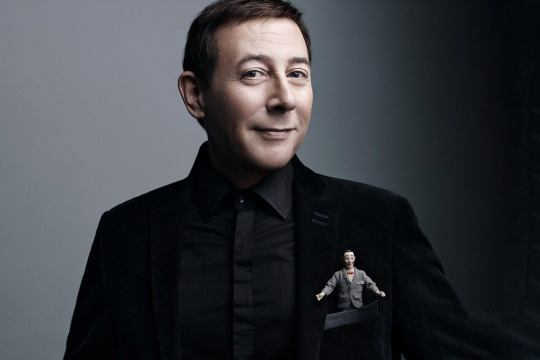
Reubens
Paul Reubens came up in the 1970s comedy scene in L.A. as a member of the The Groundlings. He and fellow Groundling, the late great Phil Hartman, worked on a lot of characters together. In 1978, Reubens created the character of Pee-Wee Herman, a man-child dressed in a suit and bowtie. It slowly started to catch on and soon enough he got an early HBO special in 1981's The Pee-Wee Herman Show. I rented it years later and it was wildly entertaining. Reubens himself had small roles in The Blues Brothers, an episode of Mork & Mindy, Cheech & Chong movies, and more.

Hartman and Reubens on Pee-Wee's Playhouse
In the 80s, there were a lot of comedians who created characters who were celebrities in and of themselves and the comedian was rarely seen outside of that character, i.e. Cassandra Peterson (a fellow Groundling of Reubens) as Elvira or Jim Varney as Ernest P. Worrell. Pee-Wee Herman was among the biggest of those comedic characters. When he appeared on MTV, hosted SNL, or was a guest on talk shows, it was Pee-Wee Herman who was the guest, not Reubens. But the character of Pee-Wee was so engaging: he was childish and but was wildly funny with physical comedy, and there was a real heart to him and had a moral compass that was admirable (i.e. running into a burning pet shop to save all of the animals). The 1980s was an era of comedians who had a unique voice literally and figuratively, i.e. Sam Kinison, Bobcat Goldthwaite, Emo Phillips, Gilbert Gottfried, and Judy Tenuta just to name a few. But Reubens was possibly the most unique voice of all of them.
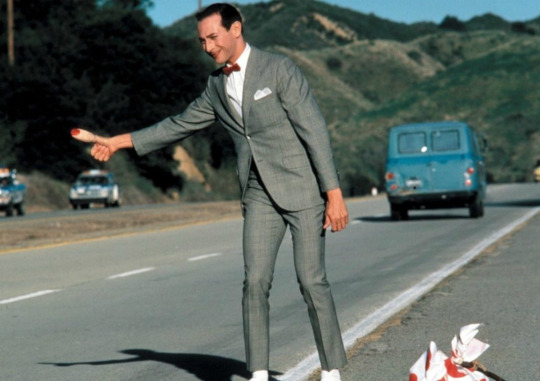
Reubens in Pee-Wee's Big Adventure
In Summer 1985, my Dad took me to the movies to see Pee-wee's Big Adventure , which was a true meeting of the minds of young director Tim Burton making his debut and Reubens. The plot was so simple, but yet it worked: Pee-Wee's bike gets stolen so he has to go across country to find it and along the way there's loads of hijinks and LOL scenes. To this day visitors of the Alamo ask where the basement is! The film is highly quotable and it's also a movie that everyone I knew my age also knew and loved. In the years that followed Pee-Wee had cameos in a number of films including Back to the Beach, Moonwalker, and Flight of the Navigator, which technically wasn't Pee-Wee it was Paul under the pseudonym Paul Mall, but the voice was obviously Pee-Wee. The follow-up movie was Big Top Pee-wee, in which Pee-Wee has a small farm and the circus comes to town, shaking up his relationship. The movie wasn't as bad as a lot of people thought, but it lacked the pure artifice of the last movie. I think people also didn't want to see a movie where Pee-Wee cheats on his fiancee for a acrobat...just not what you expect from a Pee-Wee movie and Tim Burton not directing hurt.

Pee-Wee and friends
But the Pee-Wee character really shined on TV, in the Saturday morning kids' show Pee-wee's Playhouse (CBS 1986-1991). I was still of the age of loving Saturday morning cartoons and shows when it premiered and it was loads of fun: Pee-Wee's wacky and fun playhouse surrounded with various friends, screaming the secret word, being imaginative, and learning from each other was worth tuning in each week. I loved the show and in 1988, I even began buying some episodes as they were released on VHS. I also began buying the toys, talking doll and memorabilia (sometime in the mid-00s I sold my collection to a friend). The genius in the show was that it was super funny, but without being hurtful or mean-spirited. So many talents got their start on the show too: Lawrence Fishburne as Cowboy Curtis, Natasha Lyonne, and behind the scenes you had music by Mark Mothersbaugh, and before-they-were-famous production assistants John Singleton and Rob Zombie. The series became so popular that in 1988, they even did a primetime special Christmas at Pee-wee's Playhouse.

Pee-Wee's Playhouse toys I had as a kid
It's impossible to talk about Reubens without his controversies and run-ins with the law. In 1991, he was arrested for indecent exposure during an undercover police raid of an adult theater in Sarasota, FL. CBS pulled the remaining reruns of Playhouse, toys were pulled from Toys R Us, his voice was pulled from rides at Disney. He was cancelled way before there was cancel culture. True, he was a children's show host on TV at that time. But he wasn't in character or costume and he was inappropriate in, well, an inappropriate place...which in a strange way made it kind of appropriate given the inappropriate location. Whatever your opinion is, he got a raw deal. As a TV host and on the set of his show, he was very good with kids and had really positive lessons. What he did was private and separate from the Pee-Wee character. But Reubens had the last laugh when he presented the 1991 MTV Video Music Awards to uproarious applause and asked "heard any good jokes lately?".
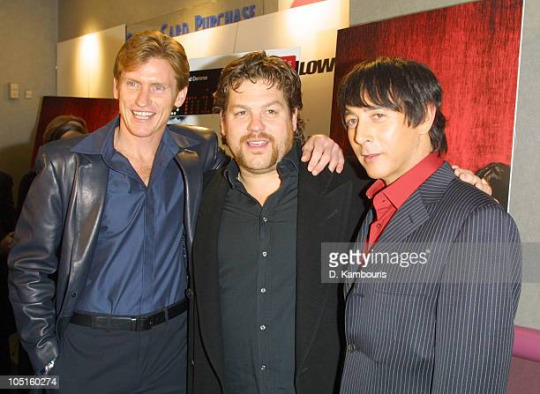
Denis Leary, Ted Demme and Reubens at the Blow premiere in 2001
Reubens did slowly return in some supporting roles separate from Pee-Wee and many of them were scene-stealers: as Penguin's father in Batman Returns, as a vampire in the movie Buffy the Vampire Slayer (one of the greatest vampire deaths ever), the voice of Lock in The Nightmare Before Christmas, as Spleen in the underrated Mystery Men, and as Derek Foreal in Ted Demme's Blow. As Derek, he was the comic relief in the crime biopic, but he also showed off his dramatic skills too. A few years prior to the 2001 release, I was an intern at Demme’s production company Spanky Pictures and the book it was based on was in development. I was blown away by Reubens' performance when I saw the movie.
In 2002 as Reubens' second act was in full swing, another arrest was made, this time it was child pornography charges. Reubens had a apparently purchased bulk collectible magazines of kitsch muscle magazines from the 1920s and some he didn't order were slipped in. I am not defending him, but I think there is an extreme difference between this type of thing and actual criminals like Kevin Spacey or R. Kelly. In 2004, the charges were dropped in exchange for a lesser obscenity charge.

Apatow and Reubens
In the years that followed, Reubens continued to have some small supporting roles including The Raconteurs' music video for "Steady as She Goes", as well as episodes of 30 Rock and Portlandia. Then something happened in the 2010s: Pee-Wee came back! First in some Funny or Die videos Pee-Wee Gets an iPad! and Pee-wee Goes to Sturgis. He, then, did a Pee-Wee live show in L.A. and then Broadway and one of the last ones became the live HBO special The Pee-Wee Herman Show on Broadway. There was also the funny SNL sketch with Andy Samberg where they got drunk on the town together. Interest in Pee-Wee continued and in 2016, there was the Netflix special Pee-wee's Big Holiday, produced by Judd Apatow. I can't say that was bad, but the bar was quite high and it was hard to live up to the nostalgia.
Reubens himself was a comic genius. That's a term I rarely use, but it is fitting for him. He understood comedy and in the last week people who knew comedy have praised him. He had a lot to do with my early interest in comedy. His films, TV and wacky (almost drug-induced) style will be remembered. Between MTV News shutting down and the deaths of Andy Rourke of The Smiths, Sinead O'Connor and now Paul Reubens it is a bad year for nostalgic Gen-Xers like me. But fortunately Reubens' work will live on!
#paul reubens#pee wee herman#rip#the pee-wee herman show#the blues brothers#cheech and chong#pee wee's big adventure#tim burton#back to the beach#flight of the navigator#big top pee wee#pee wee's playhouse#batman returns#buffy the vampire slayer#the nightmare before christmas#mystery men#blow#ted demme#the raconteurs#30 rock#pee wee's big holiday#comedy#film geek#tv
3 notes
·
View notes
Text
Stuff to keep in mind for works set in previous decades
Level of Tech
For example!
1970's is when betamax was invented—1975 to be precise. VHS came along in 1976. Home releases of films were not instantaneous and, if you're going to reference a film being on TV or VHS/Betamax/Laser Disk, you might want to research when that happened.
E.G. Star Wars Episode V: The Empire Strikes Back was in theaters in 1980, but wasn't on home media until 1983.
Music media was on records in the 70's for the most part, but cassettes were making a huge splash by the 80's. The 90's was all about the CD, and by the 2000's, and onward, MP3s became king.
Phones—Portable phones were like purses in the 70's (and a military item at first) or in cars. In the 80's, there were huge bricks. Like, literally.
The 90's saw stuff like Nokia's and primitive flip phones and Blackberries.
People also used pagers—which sent texts because phones coudln't really do that yet. That's right, with early cellphones, you needed a WHOLE separate device to text. (BTW it was called "Beeping" and those were also called "beepers." That's what the Kim Possible theme song was talking about with "Call me, beep me, if you wanna reach me.") PDAs were more of a later 90's early 2000's thing.
The first Smart Phone wasn't in existence until 2007, when the iPhone debuted, and you needed a special cell plan to get one AND it was AT&T exclusive.
Before that point, it was a flip/slide phone world, and if your parents didn't have data (and almost no one did on a regular basis), going online cost you extra on your phone bill.
I still remember the panic of trying to cancel accidentally hitting the browser button on one of my old flip-phones.
Minutes/Data plans—people used to only have so many minutes to call people (yeah, call people) a month. I can remember some plans only had 800 minutes. Some had less. If you called someone on the wrong network, that could eat up your minutes.
Texts, when they became a thing your cellphone could do, also cost you minutes/data. Same restrictions applied.
Public Telephones—I'm sure people have seen phone boxes, and phone banks—those were real. Payphones were real. You had to put in quarters or dimes to use them (hence "Here's a quarter, call someone who cares" is a saying that has been orphaned by time and technology advancing).
Collect calls were a thing too where you dialed and it would bill the other end's phone bill.
Of course, there was a famous commercial that had people figure out how to scam collect services.....
Computers—By far, these have advanced the most. The first personal computers were from the 70's, but they were primitive and the screens only displayed green-scale text. You had to have a boot disk, and an operating disk you PHYSICALLY inserted into drives to get a computer to run and these were clunky devices. Programs needed you to use computer commands to make them run.
Floppy disks used to be actually large and floppy.
Then came the smaller "floppy" disks that were really rigid, AKA the modern save icon.
As previously stated, the 90's was when CDs became king.
USB drives weren't common until the 2000's, and they were SMALL. We're talking megabites and not Gigabites were common and the gigabite drives were EXPENSIVE. Solid state? That's within the last decade and a half or so, and those started off as super-duper expensive.
It was also during the 90s that boot software became part of the bios, likewise with the OS, and we were given more user-friendly interfaces that didn't require the command menus.
Game consoles—
In the 70's, the Magnavox Odyssey was out and it was the first.
The late 70's /early 80's consoles were actually the second gen consoles. Those include the Atari 2600, ColecoVision, Intellivision, and Vectrex. (BTW there were handhelds in this generation too) Gen 3 is where the Sega Master System and NES/Famicom come into play.
Sony didn't get into the console wars until Gen 5 with the PS1, and Xbox didn't wade into the fray until Gen 6. We are in Gen 9 right now.
This isn't even touching on landlines, tvs, and other appliances!
So, Tl: Dr—Please do research if you're writing fanfiction for works set in any era before now because tech has evolved so rapidly.
1 note
·
View note
Text
MY SPECIAL INTEREST IS (FASHION) DOLLS‼️‼️
I don’t mention it on tumblr much cuz I mostly use this for art, but I absolutely LOVE dolls and I always have.
I have a collection of 70+ dolls, but I haven’t counted them in a while so I definitely think it could be 80+ by now or more!! I should check again soon.
My favorite lines are probably Lol Surprise Omg/Lol Surprise Tweens and Lalaloopsy, but I love a lot of others too like Monster High (G3, mostly) and Rainbow High! I don’t have many Barbie dolls, i only got my first one around October/November-ish last year, but I have 4 now! 2 of them are newer (Perfect Day/Movie Barbie & 2023 Holiday Barbie), and 2 of them are older (Barbie In The Pink Shoes & a 90’s Barbie I found naked at a thrift store so idk who she was lol). I don’t like a lot of newer Barbie dolls bc a lot of the quality just,,, isn’t there, but I do want to collect more 90’s Barbie’s and late 2000s/early 2010s Barbie’s because she’s very nostalgic for me.
I love fashion dolls for so many different reasons. I’ve always been interested in fashion, and I love self expression. I love dressing super colorfully and over the top (when I have the energy too. Cuz yknow. Autism lmao.) So it’s fun being able to not only fill my room with dolls wearing fun outfits, but being able to mix and match things and create whole new looks is genuinely so exhilarating for me!! I don’t restyle dolls extremely often bc I don’t wanna ruin any dolls, but when I can and do restyle dolls without needing to worry abt that, they can become some of my favorites!! I think there might also be a visual stim factor to it, tho I can’t figure out if I like dolls bc they’re visual stimulating for me, or if they’re visually stimulating for me because I like them. But either way, I can pick one doll out for the day, take it with me wherever I go, and just stare at it and keep noticing new details in the face or clothing, or even just staring at my favorite parts over n over. And there’s definitely physical stimulation too, because I love feeling the fabric and the hair, and it’s especially nice if it has a good amount of articulation so I can move them around and pose them in different ways. And there’s so many other reasons I love them too.
I also often really enjoy the movies and tv shows that doll lines come with! Lalaloopsy Girls: Welcome To Lala Prep is genuinely one of my favorite movies, period. I like all the other Lalaloopsy movies too, and the Nick Jr show (I don’t really like the Netflix Lalaloopsy show tho). There’s also 2003 Strawberry Shortcake, which btw, had some absolute BANGER songs in some episodes. I’ve seen a good amount of Monster High movies by now, my fave is probably Ghouls Rule bc it focuses more on Jackson Jekyll and he’s my fav character <33. Ever After High is great, I never watched it as a kid, but even just watching it in its entirety like a few months ago, it’s a good show with some of the best digital puppet animation I’ve ever seen.
I think I should probably stop now cuz I have things to do but OMMFGFGG I COULD GO ON LITERALLY FOREVER
hey, if you're autistic, adhd, nd etc. could you reblog this and infodump in the tags about your special interests or current hyperfixations? i'd love to hear abt them! ^_^
#actually autistic#asd#autism#autism positivity#neurodivergent#nd#neurodivergent positivity#infodumping#adhd positivity#actually adhd#<- not diagnosed but pretty sure.#fashion dolls#dolls#lalaloopsy#strawberry shortcake 2003#barbie#monster high#lol surprise omg#rainbow high#ever after high
95 notes
·
View notes
Text
Jodie Foster: A True Veteran Actress
I recently had an interesting experience while having a conversation with a student and his parents about actress extraordinaire Jodie Foster. My student had asked about what movie I was watching and I told him that Silence of the Lambs was the current film. He is only 15 and had seen Foster in Hotel Artemis and Elysium but that was about it. What then occurred was very strange; each person in the area had a different experience and described when they first heard of Jodie Foster and what films she was in. It was fascinating because it was my teenage student, my 40-year-old self, the 60-year-old father, and the late 70s grandmother, all with different stories. I will relate the stories in the order they were related to me with the first name, age, and Jodie Foster experience for each, and hopefully the layers of talent will become apparent:
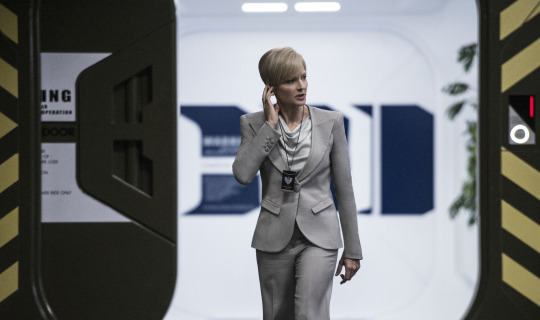
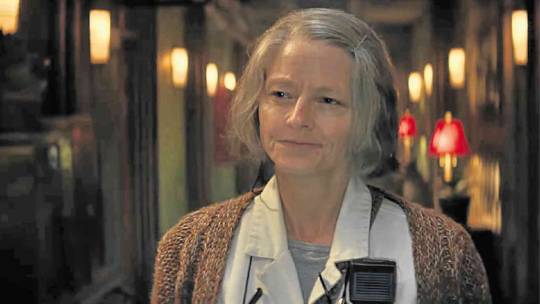
Julian, 15, Elysium (2013) and Hotel Artemis (2018)
So my student Julian had seen Jodie Foster in a couple of more recent movies but was not aware that she has done more directing work in the last 10 years. She directed on episode of Tales from the Loop (2020), an episode of Black Mirror (2017), a couple of episodes of Orange is the New Black (2013), and an episode of House of Cards (2014). Julian was not aware that there was a lot of old age make-up used in Hotel Artemis (2018) and assumed that Foster was older than she is, especially when I said she has been acting since the late 60s. I said that I first learned about her when I was a teen.
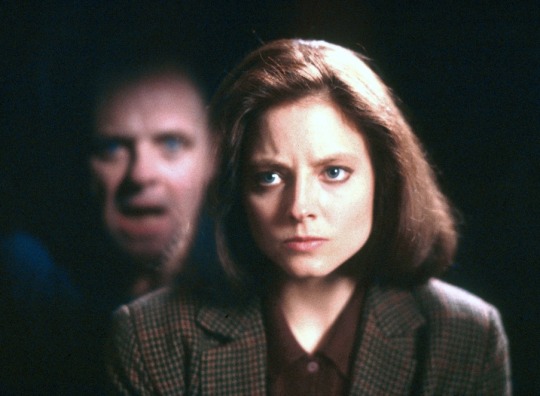
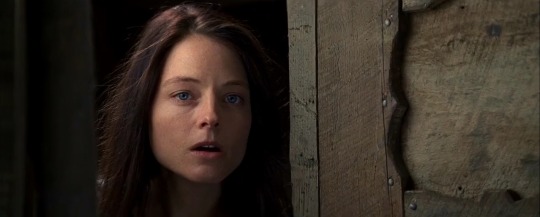
Al, 40, The Accused (1989), Silence of the Lambs (1991) , Nell (1994), Contact (1997), and Panic Room (2002)
Jodie Foster had been around in about one movie a year throughout the 80s, but she had a resurgence to her career, first with The Accused (1989) and then with The Silence of the Lambs (1991), both of which got her Best Actress Awards. In fact, she had two other movies come out in 1991, one which she played a prostitute, Shadows and Fog, and another in which acted as s a mother to a genius child while also directing, Little Man Tate. She remained relevant throughout my high school and college years so I assumed this was the high point of her career. I knew that she had been in the business for a while, but it wasn’t until I got older and studied film history that I realized how long it had been and how many legendary productions she was a part of.
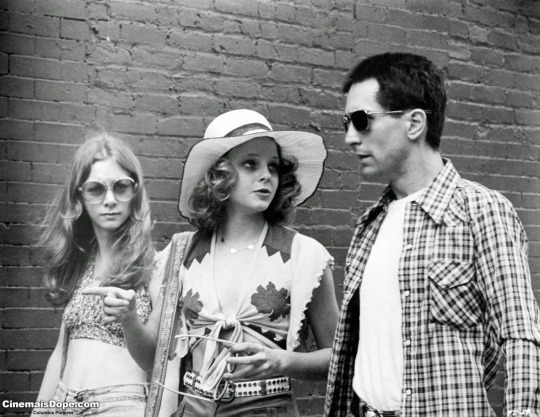
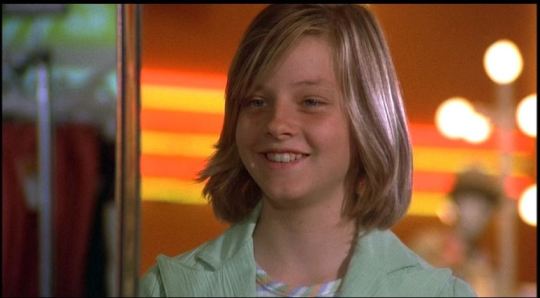
Will, 60, Freaky Friday (1976), Bugsy Malone (1976), The Little Girl Who Lives Down the Lane (1976), Taxi Driver (1976), and Echoes of Summer (1976)
That is not a typo, every single one of those films came out in 1976. My student’s father remembered Jodie Foster from when he was a teen and five movies came out featuring the actress in the same year. Take note of the pictures above; that girl in the center in the black and white photo is the same as the tomboy in the one below. In 1976, she played a girl that switched places with her mom for a day, a gangster’s girl in a child version of the story of Bugsy Malone, a genius girl that traps and kills a pedophile, a 14-year-old prostitute for which she was nominated for Best Supporting Actress , and finally a kid dying of a heart condition who has a last wish of going to Canada. Will said it felt like Foster was in every single movie that year...and she was fourteen.
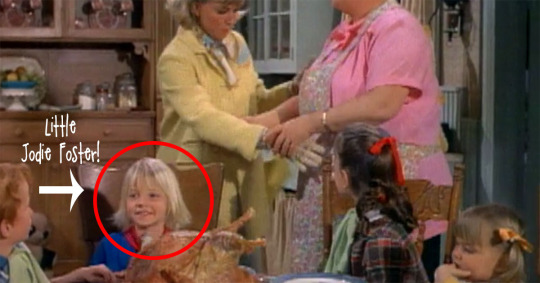
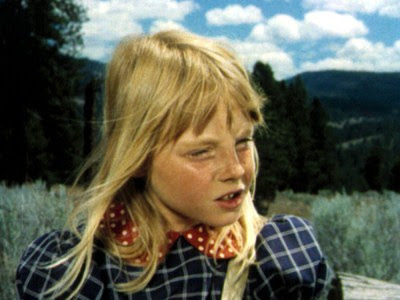
Carla, 78, The Doris Day Show (1969), Daniel Boone (1970), Adam-12 (1970), Gunsmoke (1969-1972), Bonanza (1972), and My Three Sons (1971-1972)
My student’s grandmother remembered Jodie Foster as being in a bunch of TV shows in the early 70s. It turns out that the actress has been working for half a century with 81 acting credits on the big and small screen. She is not even 60 and started working regularly when she was 7-years-old. She played age inappropriate roles to the point that she needed her older sister to be a body double for more racy scenes. All of us agreed that Jodie Foster is a spectacular actress that has major box office draw. She is an American cinema staple and I look forward to rewatching Silence of the Lambs as well as checking out any new projects she is a part of.
#jodie foster#the silence of the lambs#the accused#television#best actress#taxi driver#hollywood actress#actor/director#introvert#introverted#freaky friday#nell#elysium#hotel artemis
59 notes
·
View notes
Text
Favorite Media of 2020!
There was a large swathe of this year during which I was unable to concentrate on reading (as there probably was for a lot of other typically-frequent readers), so, as a result, I ended up listening to way more podcasts and watching way more TV shows. Not a bad thing, but boy did I read way less books than usual.
However, for the first time in a while, the amount of fiction I read was about equal with the amount of nonfiction I read. Last year’s reading resolution was to read more fiction, so...success??
I did read a lot of phenomenal fiction when I had the energy to do so this year.
Books - Fiction
The Martian - Andy Weir
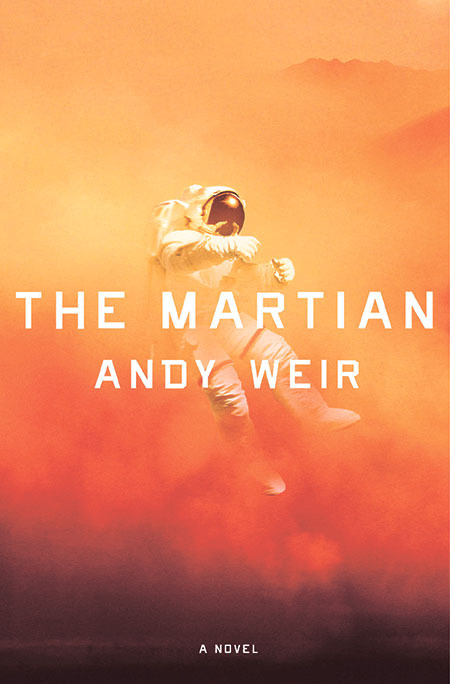
This book is the hardest of the hard sci fi I think I’ve ever read. Every single aspect of it is minutely researched and calculated. The author literally wrote equations to write this book. The science is insanely impressive and yet...it never loses its sense of humor or humanity in the mix. In fact, they’re the thing that drives the entire story.
Warlock Holmes - G. S. Denning
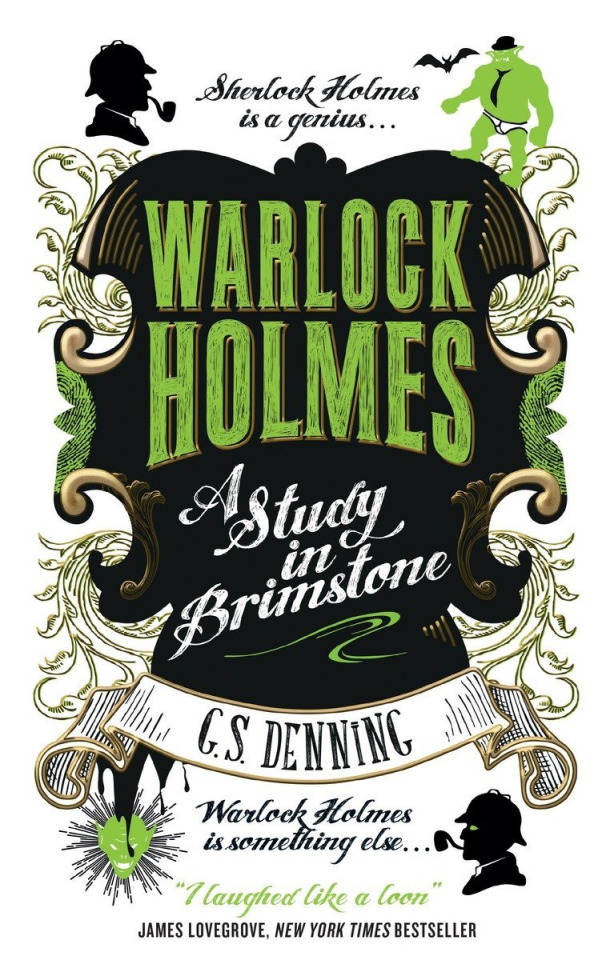
Way early in the year I was strolling down the fantasy aisle at the library, when this cover caught my eye. I took one look at it, went “oh, this looks silly” and...proceeded to devour the entire series in a matter of weeks.
It is very silly. Especially when it’s pointing out something that was silly in the original. There’s something so satisfying about Watson immediately answering Holmes with the correct number of steps in their flat when he’s trying to make his point about how most people don’t pay attention to things like that.
World War Z - Max Brooks
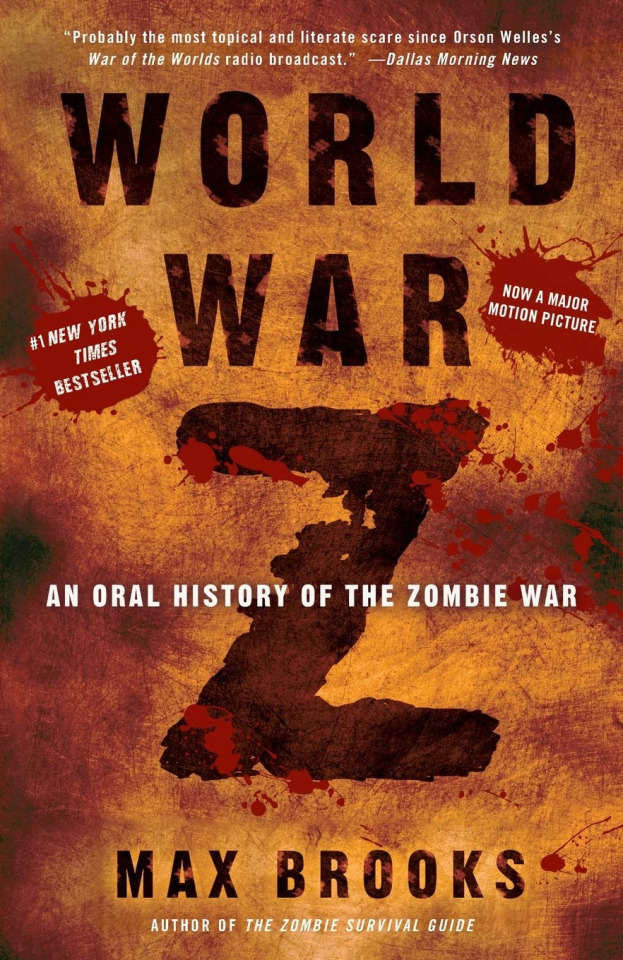
Every single scenario in here could easily support an entire book. A park ranger whose job it is to contain the yearly zombie spring thaw? HECK YES. I’d read tens of thousands of words about that. A Chinese admiral who defaults, steals the government’s premier submarine, loads it up with the families of his underlings and takes to the sea for years to live in the maritime economy that has sprung up in a world where everyone is trying to escape the shore? That could be an entire movie on its own.
Every chapter was more creative than the last and as a huge worldbuilding fan, this book was so, so fun.
An Unkindness of Ghosts - Rivers Solomon
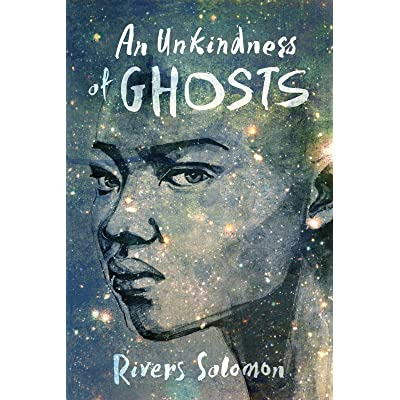
In which a queer, neurodivergent protagonist solves a mystery on a spaceship which is a microcosm of antebellum era politics! This had a beautiful, mysterious, wonder-inducing writing style and it was a joy to peer into the wildly differing minds of every single character.
Books - Nonfiction
Underland - Robert MacFarlane
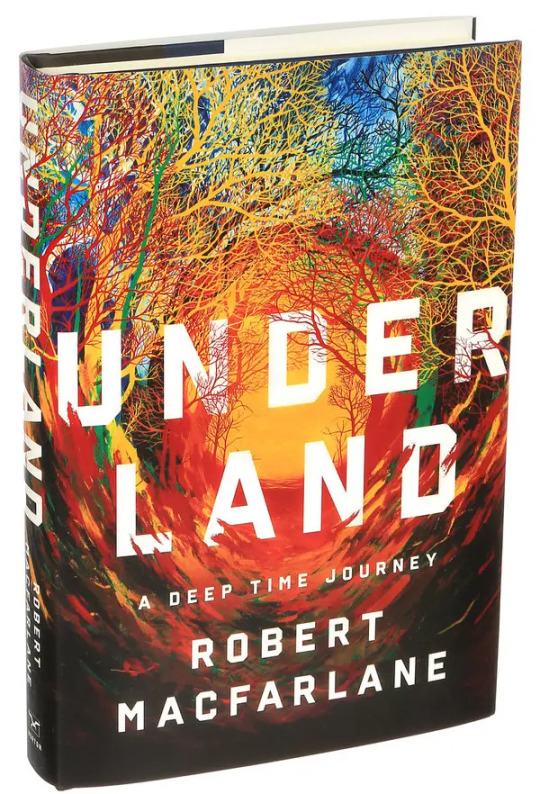
In every chapter, the author visits a different hole. Basically.
It’s an exploration of caves, catacombs, mines, nuclear waste facilities and the hidden underbelly of every forest. It was fascinating. And fundamentally changed how I look at time.
Rejected Princesses - Jason Porath
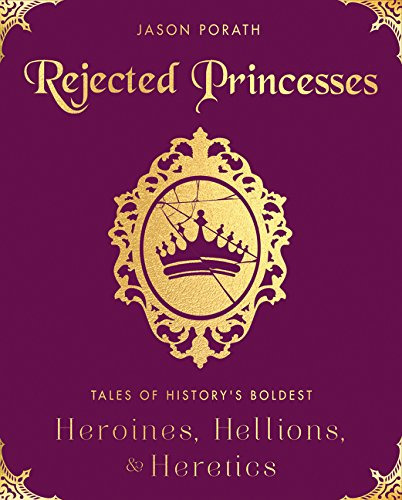
After years of having enjoyed the web entries, I finally got my hands on the first book and was not disappointed.
There are the more entertaining entries, of course and the art is as charming as always, but what struck me the most were the more difficult stories. The deeper you go into this book, the more horrific it gets. The author does not hold back on the indignities suffered by the historical figures he writes about. It’s terrible...but also very, very illuminating.
The Gift of Fear - Gavin De Becker
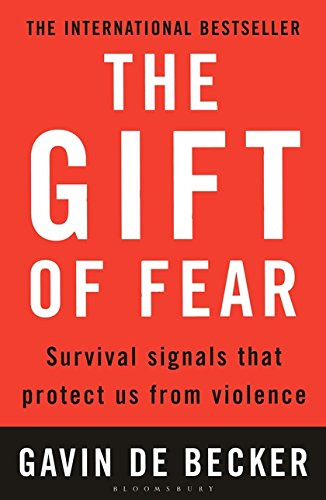
This book - while maintaining all the essential information in it - could be pared down to one sentence in a sea of blank pages and that sentence would be: trust your instincts. End of story.
But in a world where instincts are either customarily suppressed or going haywire, it’s not quite that easy, which is why I’m glad there is more to the book.
I picked it up thinking “ha ha, betcha can’t help a person with anxiety who fears all the time already” and...what it actually ended up doing was giving me the tools to differentiate between real fear and unfounded fear. And did help with the anxiety quite a bit.
Fanfiction
Watch Over Me - cakeisatruth
A Bioshock fic from the point of view of a little sister who is learning how to trust and be an ordinary child again. Dark and sweet. An excellent combo.
All That is Visible - Ultima_Thule
An exploration of a minor character in a well researched historical context? That’s my jam! How did they know?? A Tron fic about what it’s like to be a female programmer in the 70s.
Graphic Novels
The Adventure Zone - McElroys + Carey Pietsch
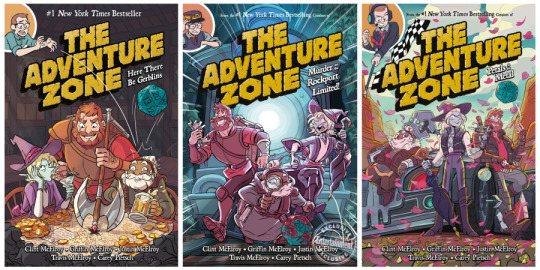
Yesssssssss! It was a running-to-the-library type event whenever my library got a new volume in. The jokes are so good, the art is so lively and the ways in which they added the details that the podcast couldn’t necessarily get across is *mwah*
Trail of Blood - Shuuzou Oshimi

Hoooooooly shit, the art style of this one!! It’s beautifully detailed and expressive, sure, but the real draw for me was how it changes with the emotional state of the main character. There’s this sequence in which he’s consumed with anxiety at school and all of his classmates become blurry and unfocused, until they can’t be recognized as humans at all, that particularly sticks with me.
It’s a horror story about a kid who witnesses his loving mother push his cousin off a cliff for seemingly no reason and is then obligated by her to keep the secret, which is eating him from the inside out. It’s so good, guys, please read it.
Level Up - Gene Lien Yang/Thien Pham
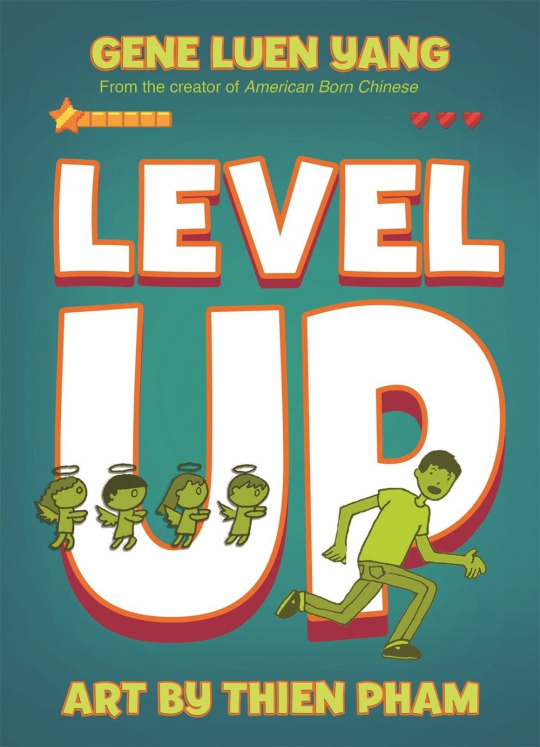
A story about a kid who is haunted by his late father’s desire for him to become a gastroenterologist. It’s funny and touching and the ending gave me what I can only describe as a feeling of exhilaration. Y’know that feeling when something unexpected but not out of left field, perfectly in tune with the narrative arc and gut bustingly funny happens, all in the same panel? That one.
Film
Searching
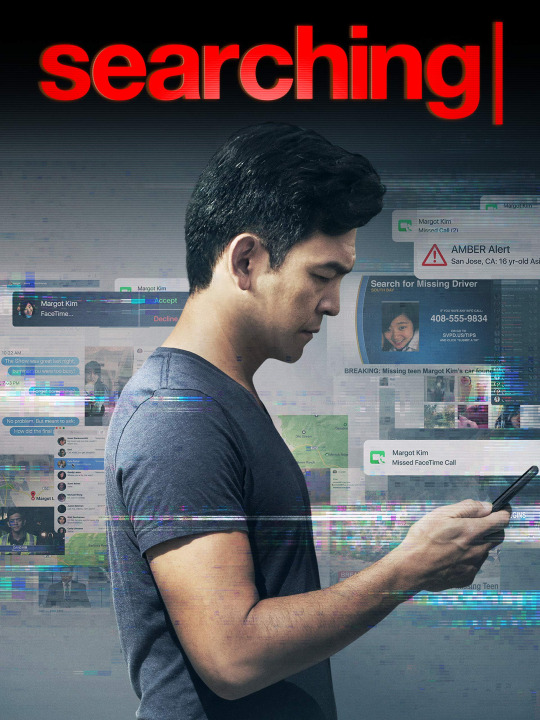
This is a fairly standard thriller about a dad trying to find out what happened to his missing daughter. It’s also found footage...but not in the usual way, which was what made it so compelling to me. It’s told through the dad’s phone calls, google searches, social media interactions, news footage, security cameras and webcams. It was such a cool way to tell a story.
Train to Busan
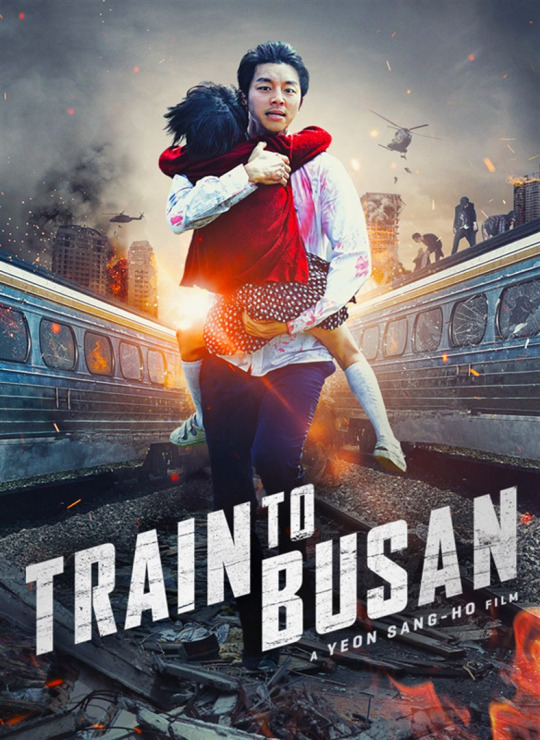
There’s a lot that’s already been said about this movie and I don’t think there’s much more I can meaningfully add to that. Suffice to say that ya gotta take care of each other if you’re going to survive a zombie apocalypse!!
TV Series
My Brother’s Husband

As close to a perfect adaptation as a person can get (barring the entire conversation in English which was...oof). I was so happy when they took it a step further and showed Kana and Yaichi actually getting to meet Mike’s family.
Zumbo’s Just Desserts
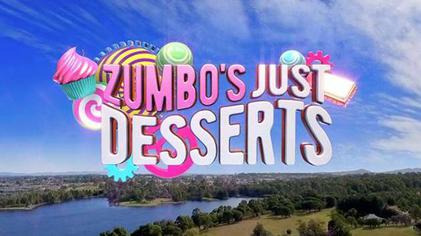
I watched a lot of baking shows this year. Like...a lot. They were my much-needed comfort viewing for the year and this one was my favorite, even over The Great British Baking Show (which I LOVE). Why? Because the pastry chef for whom it’s named makes such bizarre and wonderful desserts and fosters an environment in which the competitors do the same. I’ve never seen anything like a lot of the desserts that make an appearance on this show. Every single episode was an awesome surprise and so help me, this show had better get a third season.
She-ra and the Princesses of Power
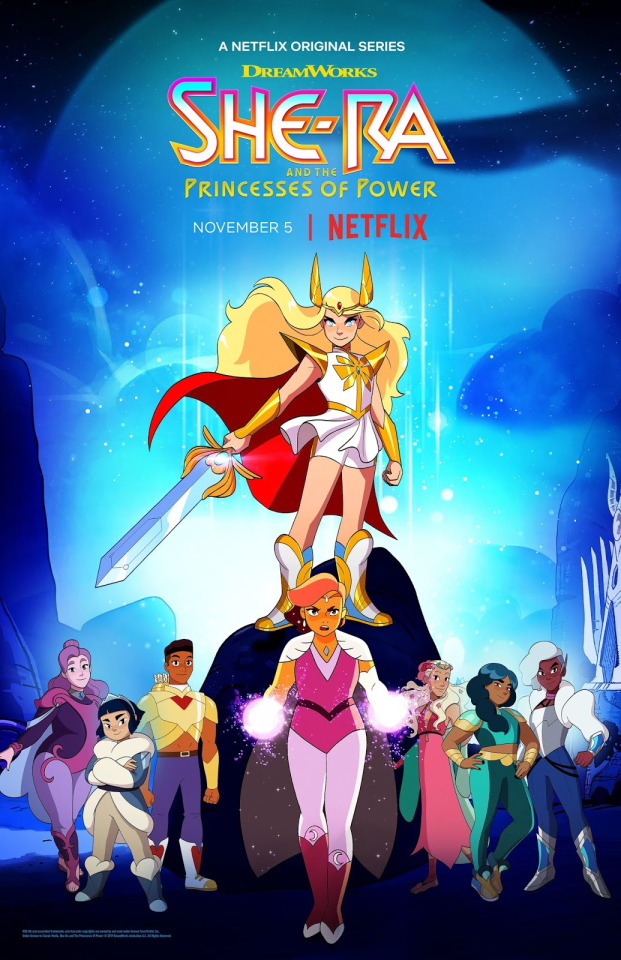
There’s also a lot that’s been said about this one, so I won’t say much more. Suffice to say: DAMN. That’s how you do an 80s toy tie-in cartoon remake.
Infinity Train
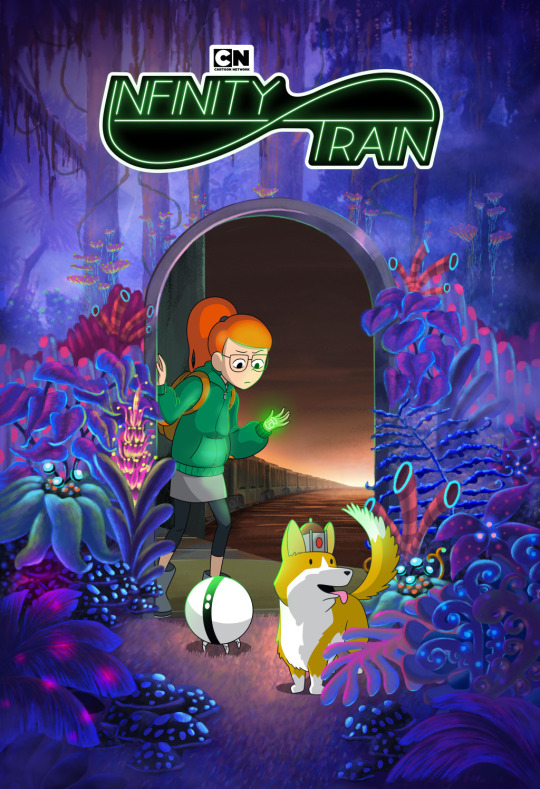
This show’s premise is probably the most unique I’ve seen in recent years. Its balance of comedy, horror and existential dread is also *mwah* I also love how much it trusts the viewer to figure things out on their own.
Primal
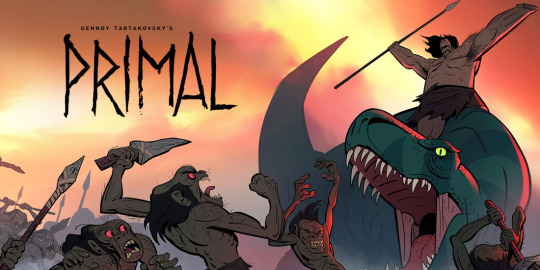
A late entry sliding in before the year ends! I finally got to watch the second half of the first season last weekend and it was EXCELLENT. The pacing, the brutal fight scenes, the adorable dinosaur antics, the animation, the quiet moments - *mwah-mwah-mwah-mwah-mwah*
The most emotional moment for me was the part in which the protagonists watch, with sorrow, as the rabid dinosaur who’s been trying to kill them all night dies an excruciating death.
Also it sets up a fascinating new plotline right before ending in a cliffhanger!! Another one for the ‘had better get a next season’ list.
Games
Night in the Woods
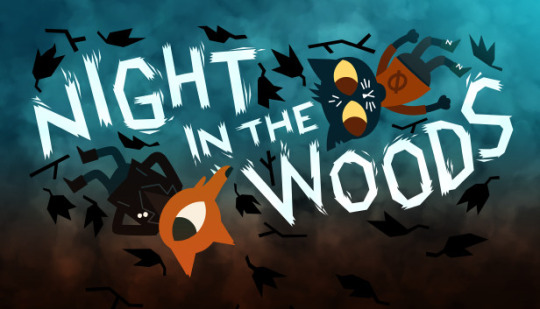
This is one that’s been on my to play list for a few years and I was so glad I finally got my hands on it. It’s like...The Millennial Experience (TM), the game. I felt so seen, playing it. The character writing was fantastic.
Prey
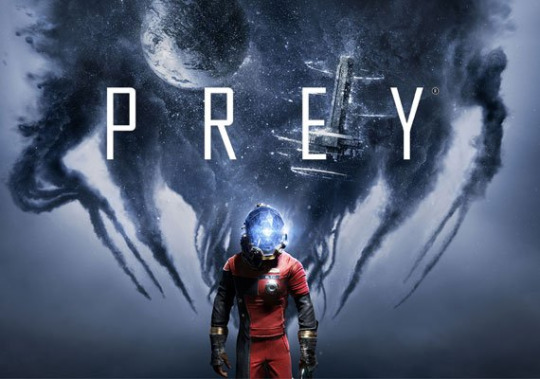
I don’t know why I put off finishing this for so long. I guess I wasn’t in the right alien killing headspace for a while?? Anyway, the setting is gorgeous, the alien biology is weird and cool, the ethics are delightfully murky and the interconnectedness of the station was really cool, especially in the OH SHIT moments at the end.
Podcasts
The Adventure Zone
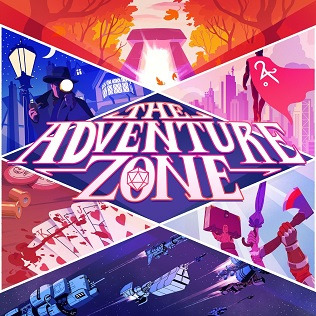
I tried to narrow this down to one favorite arc, but found that I couldn’t do it. I love Balance for its comedy and creative energy. I love Amnesty for its drama and acting. I am loving Graduation for the depth of its world and the way in which the real story behind everything that’s happened is slowly unfurling. It’s a good podcast all around.
The Magnus Archives
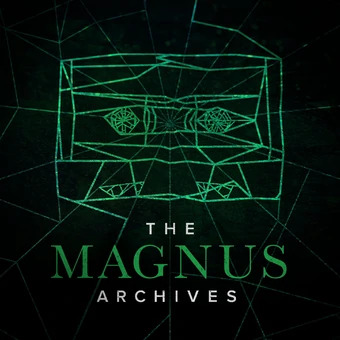
Who obsessively listened to every single season while playing Minecraft in about a month? Surely not me, nooooo. Of course not.
There’s also been a lot said on this one, so I’ll keep it brief. I’ve seen things in here that I haven’t really seen elsewhere in horror. My particular favorites were the creepy psychiatric hospital in which the horror comes not from the patients, but from the denial of the doctor to believe them about their mental illnesses and every single thing related to the Anthropocene. The one with the Amazonian village made out of trash - CHILLS.
#tma#taz#prey 2017#night in the woods#infinity train#warlock holmes#she-ra#zumbo's just desserts#a thought
10 notes
·
View notes
Text
Continuity
I’m still reading Star Wars comics from the original Marvel run of 1977-1986. Last night, I made it to the Return of the Jedi adaptation, so now I’ve read all the issues set between that movie and Empire Strikes Back. As I expected, these comics (#45-80) feel a lot more like authentic Star Wars stories than the pre-ESB issues (#7-38). The biggest plot hole that I noticed was that Luke still has his lightsaber throughout this period, despite losing it on Bepsin.
It occurred to me later that this wasn’t necessarily a mistake. There’s a deleted scene from ROTJ which shows Luke assembling his new lightsaber right before the mission to save Han Solo from Jabba the Hut. This strongly implies that Luke didn’t have a lightsaber of his own between Episodes V and VI. This was further supported by the ROTJ radio drama, produced in 1996, which incorporates the deleted scene into the story. There, Luke expresses frustration with how difficult it is to build a lightsaber, and then he finally realizes that he should have been using the Force to assemble the pieces. I haven’t read the novelization of the movie, but maybe it was touched on there as well.
Later sources indicated that building your own lightsaber is the final ritual for completing your Jedi training. This is shown in the 2002 Clone Wars cartoon, where Barriss Offee assembles her own saber on Ilum, under the supervision of Luminara Unduli. I’m pretty sure this scene was inspired by Darth Vader’s line in ROTJ, when he observed that Luke’s training is complete after checking out his badass green lightsaber. The implication is that building your own lightsaber is difficult enough that Luke would have to be a Jedi Knight just to pull it off.
But in the early 80′s, none of that lore existed, and it would be a simple matter for writers to assume that Luke had no trouble at all getting a spare. What I find strange is that no one bothered to explain where this spare lightsaber came from. It’s like the writers just assumed he never lost the first one, but that’s crazy.
Really, the artists on the original Star Wars comics never seemed to be able to keep track of the lightsabers to begin with. In the early comics, they paid no heed to the color schemes or hilt designs at all. Not that I would expect late 70′s artists to really worry about props from a movie that had just come out, but they kept coloring all the lightsaber blades at random, and drawing the hilts way too short and thick. Luke and Vader looked like they were holding soda cans. The art started to get more true to the movies when Tom Palmer got involved, but one thing I started to notice was how the artists would draw Luke and Vader’s lightsabers on their belts, even when they were holding them, ignited, in their hands. It was like the artists recognized the lightsaber hilts as part of the characters’ costumes, but they didn’t understand what they were. I can’t really blame them for this, since the big column of light was what really drew everyone’s attention in the theaters, and it wasn’t like they could look up hilt schematics on Wookieepedia like you can now.
Anyway, it struck me as kind of interesting how something minor like that can start off as an oversight, and then be easily corrected, or magnified into a major plot hole. It’d be pretty simple to explain Luke’s between-movie lightsaber.
Obi-Wan Kenobi had a spare tucked away somewhere, and Luke had been keeping it in storage just in case something like this happened.
Yoda had a spare, and Luke took it with him when he went to Bespin, and put it inside R2-D2′s lightsaber compartment for safe keeping.
Luke found a new lightsaber on a mission.
Luke built a new lightsaber to replace his old one, then lost that guy, requiring him to build the green one in ROTJ.
Luke found/constructed a replacement weapon, but it’s actually a knockoff “laser sword” and it doesn’t work as well as a genuine Jedi design, but it got the job done until he could do the job right.
I find it curious that no one ever bothered to tell any of those stories, though. The Expanded Universe era of Star Wars multimedia seemed determined to sew up as many continuity problems as possible. Some writer in the 2000′s did a story to establish that Jedi would swap lightsabers as a gesture of mutual respect, just to explain why Mace Windu’s action figure has a different lightsaber design than the one he has in the movies. I’m not too worried about this stuff, and I don’t think Jo Duffy or David Michelinie were too worried about this stuff when they wrote Luke carving up Stormtroopers in Star Wars #45-80, but between 1994 and 2008, there were people working for Lucasfilm who were paid to worry about this stuff. I’m genuinely surprised that no one ever got around to penning Star Wars: Luke’s Spare Lightsaber: The Lobot Chronicles: Dark Tidings.
It’s the little things like this that get lost in the shuffle, I’ve found. When you read a Star Wars novel or comic book, the major characters are always very consistently portrayed, and the story always sticks very closely to the groundwork laid down in whatever movies were around at the time. Star Wars #45-80 excelled at this. Every issue was either about the good guys searching for Han Solo, or dealing with a crisis big enough to pull them away from the search for Han Solo. I was disappointed that they didn’t spend much time at all having Luke work on his Jedi training, or trying to make sense of Darth Vader being his father, but I think Marvel knew the next movie would address that, so they knew not to wade too deep into that stream.
The stuff that gets changed the most is the minor characters. I read one issue where they basically established that Wedge Antilles never made it off the base on Hoth in ESB. He and “Nice Shot” Jansen had to take cover in the AT-AT Luke blew up, and then they lived in what was left of the base while they waited for the imperials to clear out. He was stranded there for months, and it was a pretty cool story, but I’m betting that later Star Wars writers decided to ignore this, because they wanted to use Wedge in other stories during that period.
General Tagge’s another interesting example. He was the guy on the Death Star in Episode IV, the one who warned that the Death Star was vulnerable while the Rebels had the stolen plans. Tagge’s kind of a walking continuity error to begin with, because everyone kept getting him mixed up with Admiral Motti, the guy who sassed Vader and got choked out for his lack of faith. In the Archie Goodwin run on Star Wars, Tagge was killed in the movie when the Death Star exploded, but his brothers and sister turned up as recurring villains with a grudge against the Rebels and Vader alike. Flash forward to 2015, when Disney took over Lucasfilm, and in the new continuity, Tagge survived the Death Star’s destruction because he happened to leave right before it went to Yavin IV to get blown up. This was done mainly to set him up as a rival to Darth Vader in the 2015 Darth Vader comic. I guess they figured there was no reason to invent new characters when they could just salvage some of the officers from the movie. Tagge feels more authentic than his siblings because we actually saw him on film. He’s a “real” Star Wars guy, while rest of his family are just cartoons. I think that’s the attitude anyway. Back in 1978, they were probably eager to create new characters because they had tons of world-building to do. So the 2010′s Marvel comics don’t square with the 1970′s Marvel comics at all, especially where the Tagges are concerned, but Darth Vader’s dealings with them feel pretty consistent.
The reason I bring up all of this is because I used to think that the continuity in Star Wars was never terribly complicated. When production of The Force Awakens got started, Lucasfilm announced that they were rebooting the whole Star Wars canon, declaring all the Expanded Universe content as “Legends”, which no longer counted as official continuity. The only hard canon sources from now on were the movies, the Clone Wars TV series, and anything published after that announcement. Naturally, all the post-Return-of-the-Jedi stories would be off the board, which only made sense to me, seeing as Force Awakens would contradict it. But I figured the other stories could still be made to fit together somehow, since none of them had anything to do with Rey or Kylo Ren or the First Order, or whatever.
But really, it’s been like that all along. The novels and comics would introduce some idea, and others would build on it, and then George Lucas would override it with his next project. Then the writers would have to pick up the pieces. The 2008-2013 Clone Wars TV series trampled on a lot of continuity from the 2002-2005 Clone Wars books and comics, primarily because George Lucas worked on the TV series, and he was the final word on this stuff. That announcement in 2014 pissed off a lot of Expanded Universe fans (so much that they bought a bunch of billboards to complain about it), but it was kind of inevitable. They’ll probably have to wipe the slate clean again around 2040 or so, because there’ll be enough new movies that the comics and novels won’t align with them.
I sort of half-joke about my own fanfiction getting this kind of treatment. My goal is to write stories that could fit into the established continuity, but I can only work with the continuity I know. With Dragon Ball, that was easy, until Dragon Ball Super got underway, and Akira Toriyama started writing new stuff. It was pretty easy to write my own female Super Saiyan, until DBS introduced a couple of their own, and now I have to wonder if they’ll say or do something that might contradict my own take. Likewise, this Broly movie might establish some new lore that I need to take into consideration. I can write new material to work around those things, but the stuff I’ve already written is pretty much locked in. My private joke is that in any of these new animations, a character will just stare at the screen and coldly announce that “Mike’s fanfic never happened.”
But that’s pretty much what Lucasfilm has been doing to the novel and comics writers for over forty years. “Splinter of the Mind’s Eye” would have been the official sequel to Star Wars if Empire Strikes Back hadn’t been funded. Instead, Dengar and Bossk looked at the screen and said “Alan Dean Foster’s novel never happened.” Return of the Jedi killed every Luke/Leia shipper’s hopes and dreams. “Oh, those fanfics never happened, my young friend,” Ben Kenobi said from beyond the grave. Attack of the Clones wreaked all sorts of havoc on Boba Fett’s backstory. The Force Awakens wrecked the Skywalker-Solo family tree. “Han and Leia only had one kid, and I’m gonna kick his ass!” Rey shouted asskickingly. And on it goes. I read that one writer resigned after they retconned all the stuff she had set up about Boba Fett’s home planet, but that’s the way the game is played, unfortunately.
Me, I’m just writing my stuff for fun, when it comes down to it. I like to think all the continuity can be fit together, but the reality is that there’s too many redundant pieces, so they can’t all be part of the same picture. You can either have Tagge or his brothers, but not both. You can decide to keep Ben Solo or Jan and Jeice Solo from the EU novels, but not both. Or you can do an AU, I guess. They’re all AU’s when you get down to it.
I suppose that, no matter what, I prefer my own assumption that Luke just didn’t have a lightsaber between Empire and Jedi. I’ve read too many stories about how there’s more to a Jedi than his lightsaber, and how the best Jedi never use them at all, so it makes sense to me that Luke had to make due without one, and use the loss to force him to refocus on his training. While the others searched for Han, he was doing cool Jedi homework that he should have been doing on Dagobah, and he purposely waited until he was finished before building a new lightsaber. That just makes too much sense to me, even if some other version is presented. But the other stories are still fun to read. They don’t have to be canon to be enjoyable.
#/#//#///#////#/////#star wars#writing#i still cannot believe those guys blew four grand on billboards#like someone at disney was going to see those and publish the next round of eu novels#'holy crap! a billboard! those nerds mean business!'#the post rotj eu stuff was trash anyway#they killed off chewbacca in those#that's all you need to know#the sequel trilogy has plenty of chewbacca for everyone#they know what people want#and it's chewbacca#not 70 year old boba fett running around with his grandkids#not jaden skywalker-solo-organa-fett-thrawn marrying starkiller from force unleashed#i do wish they'd write some more sith novels#but that was always an option
7 notes
·
View notes
Text
DC produced a comic adaptation of the TV show which featured a lot of characters that for this reason or that couldn't be included in the show. Blue Beetle was one of them, along with Firestorm and Power Girl just off the top of my head. I remember reading some folks thought he was barred from the cartoon because of the Blue Beetle character on The Electric Company from PBS, but that's not so. Worse luck, he was free and clear to use.
Anyhow, Ted was featured in a couple of issues. One, he went up solo against the Gen. Eling version of the Hairy Man (this was after the Patriot Act episode that brought together the Seven Soldiers of Victory), and another featuring him and Booster Gold. It was classic Blue & Gold "Bwah-hah-hah" written by the late Kieth Giffen, author of those classic Justice League International stories.
You probably know this, but allow me to nerd out. The Ted Kord Beetle's adventures - along with, among others, the Question and Captain Atom - were published in the '60s & '70s by Charlton Comics, one of the many Number Threes that have come and gone. They went out of business and DC bought up the properties, introducing them to the universe (and readers) during the Crisis On Infinite Earths. Later, they provided readers with some of the best comics of the late '80s/early '90s. Seriously, check out Dennis O'Neil's Question run. Top notch.
Anyhow. Charlton didn't invent the character of the Blue Beetle, though, and he wasn't originally techno-wizard Ted Kord. The original Blue Beetle was one of the earliest costumed do-gooders, first appearing in 1939's Mystery Men Comics by Fox Publications. They were an interesting company, known for pushing the boundaries when it came to horror and sleaze.
As far as memorable characters go, they're best known for two of the silliest: The Bouncer and Stardust the Super Wizard. They also published Matt Baker, one of the few pre-WW2 African-American comic artists, and his "good girl" work with Phantom Girl acquired from Quality Comics (Plastic Man, The Blackhawks, etc.) and a take on Thor I know nothing about, but the rest was pretty much "rip off something popular and see what we can get away with."
Initially, Dan Garret was the son of a police officer slain in the line of duty. So he pulls a Bruce Wayne, runs around in a bulletproof costume, and takes a vitamin that makes him faster and stronger. Typical Golden Age stuff. He sort of did a Green Hornet/Phantom thing by marking his folks with a scarab-shaped whatzit and had the normal supporting cast (blonde reporter in love with the hero but scornful of the secret identity, comic sidekick, old guy, etc.).
He became a U.S. agent during World War 2 and his super vitamin started giving him real superpowers like flight and X-ray vision. Later, when superhero comics fell out of vogue, he became the host of a horror/crime anthology, not unlike Captain America did in the '50s. Still, Dan Garret was pretty popular. He had a radio serial produced by CBS that made him out more like the Shadow and a daily comic strip drawn by, among others, Jack Kirby (under a pseudonym).
After briefly being published by Holyoke Comics (no one of note apart from a Batman rip-off, Cat-Man & Kitten (yes, she's a she)), the character was picked up by then-young Charlton Comics in the '60s. They made some changes. This time around, Dan Garrett (they added an extra "t") was an archeologist who found a blue scarab on a dig. When saying the magic words "Kaji Dha!" Garrett was transformed into the Blue Beetle, with super strength, flight, X-ray vision, the ability to shoot energy beams, and whatever the story called for.
The stories were actually pretty camp, even for '60s comics, but Dan was replaced in 1966 by Ted Kord. I don't know how the story's been changed, but Ted was a favorite student of Dan (even though Ted's an engineer and, well, comic books, I guess), and answers a call for help. He finds his teacher mortally wounded and vows to take up his mantle. However, he can never make the scarab work, so he turns his engineering genius into a weapon against crime. He was created by Steve Ditko, so bonus points there.
Dan's made a couple of background appearances in the DCU and was once brought back to life by the scarab to fight his successor. Ted Kord's been a favorite since I was a kid and I fell in love with Jaime Reyes from the get-go, though I didn't care as much for the Blue Beetle series where Ted tries to play the mentor role for Jaime. I don't like it when comics portray Ted as considered a loser among the rest of the heroes, though I know continuity's been flip-flopped a couple of times since he went down in the most badass way possible.
In a world where gods clash and men can run faster than the speed of light, a guy who dresses like a bug and uses a gun that's expressly meant not to kill has the biggest balls in the DC universe. Plus, he's probably the only billionaire superhero who isn't carrying a boatload of baggage.
Kaji Dha!

Heroes & Villains The DC Animated Universe - Paper Cut-Out Portraits and Profiles
Elseworlds Addendum
Blue Beetle / Ted Kord
A brilliant industrialist and designer, Ted Kord decided to use his acumen for mechanical engineering to fight crime as the masked vigilante known as The Blue Beetle. Along with a levitating hover-car aptly named ‘The Bug,’ Kord devised numerous non-lethal crime-fighting weapons. This ranged from an incapacitating strobe-light gun to bug-shaped flying surveillance drones.
Although Ted had inherited the extraterrestrial scarab from the original Blue Beetle, the scarab never bonded with him and he remained unaware of the awesome powers this item could bestow. The scarab ultimately ended up bonding with young Jaime Reyes who was able to unlock the full potential of the alien weapon and operated as the third Blue Beetle.
The Blue Beetle was not included in the original DCAU due to licensing issues. The production company was unaware of whether or not they owned the intellectual property rights to produce cartoons and toys based on the character and hence he was left out. Which is a true shame in that an episode dedicated to the madcap high-jinks of Blue Beetle partnering up with his best buddy, Booster Gold, could have been a highlight of the series.
#Blue Beetle#Ted Kord#Booster Gold#Justice League#DCAU#cut-out#Dan Garrett#Jaime Reyes#Fox Comics#Holyoke Comics#Charlton Comics#comic books
22 notes
·
View notes
Text
Do you or have you ever owned a cup with your name on it? Nope. What’s the most expensive crafts tool that you own? I don’t have any expensive craft tools. Have you ever woven baskets of any kind (wicker, paper, cardboard etc.)? No. How do you like Great Balls of Fire by Jerry Lee Lewis? I’m familiar with the song, but I wouldn’t say it’s a favorite song of mine or anything. Speaking of Jerry Lee Lewis, have you seen the biopic about him? Nope
How about the biopic about Tina Turner? Nope. Do you like the TV-show Frasier? No. The Hallmark Channel plays a few back-to-back episodes of The Golden Girls at night and then afterwards a few episodes of Frasier before I Love Lucy. I always change it when Frasier comes on. What’s something you know by heart? A lot of things, I suppose. Lyrics to many songs for one. How valuable does a coin have to be for you to bother to pick it up? I’d probably stop to pick up a quarter. What would be something you would wait in line to get for free? Coffee. In Finland people wait in line for free buckets. Oh. Has there ever been a leak anywhere in your house? Yes. Have you ever slipped in the shower? No. Have you ever made any decorative crafts? If so, are they displayed? Nope. Is it very humid where you are right now? No. What is the most suggestive thing someone has said to you? Uhhh. I don’t know. Do you have friends who you playfully flirt with? No. Doesn’t the Z in the Bzoink logo look like an L to you, too? No. Did you ever take that 5000 question survey that was circulating Tumblr? I took most of it. I still have yet to finish it. It would get overwhelming and I’d take breaks from it, which usually resulted in me forgetting about it entirely. It’s been awhile since I did one of the parts. Have you ever had to change a zipper in your favourite article of clothing? No. Do you prefer buttons or zippers in general? Zippers. Did you grandma have a box full of pretty buttons? She had that cookie tin, you know the one, with sewing supplies and whatnot. Why do all grandparents have that? What’s the most exotic spice in your spice rack? I wouldn’t say there’s anything “exotic” in there. Do buttons tempt you to press them? No. I’m more afraid to if I don’t know what it’s for. Do you have a favourite television host? Dr. Phil. What’s your opinion on celebrity chefs? I don’t care. Back when it first started, did you watch ANTM? Not when it first started, but I watched a few later seasons. I watched the last 2 latest ones. The one where it came back and Rita Ora replaced Tyra and then the last season that was on where Tyra came back. Did you know, that there was even a Finnish version of ANTM? Nope. Are you accident prone? Not usually. Have you ever broken something really valuable? Yes. What do you see as timeless? A lot of the songs I like that are from the late 60s, 70′s, 80s, 90s, and early 2000′s. What is something that you own, that has sentimental value? A lot of things. Have you ever had your own website? I had a freewebs or whatever that I made before as a fansite. What’s your favourite board game? I love board games in general. How about your favourite card game? Cards Against Humanity, ha. What’s something that you finished recently? My cup of coffee. What’s the smallest town you recall visiting? This little unknown town in my state where my grandparents stayed once while they were visiting (they live out of state, but travel in their RV every summer to visit). I don’t remember why they chose that particular town that year. What’s the longest distance you’ve had to go to work or school? Not far at all. My college was local and less than a 10 minute drive away. Would you learn a new language, if you didn’t share one with your lover? Sure. I guess I’d have to in that case. Do you have friends who are constantly tagging you in challenges on FB? Not challenges, but I have a friend who is always tagging me in some giveaway thing they’re entering on Instagram or Twitter. It’s actually rather annoying. When it comes to chocolate, do you prefer nougat, jelly or caramel filling? I’m not a fan of fillings in my chocolate, really. It depends, though. Are you more concerned about winning than just participating? No. Has somebody you know taken their own life? No. What is a number that has some significance to you? Why is that? 8. I don’t know why, but it’s been my favorite number since I was a kid. Do you prefer onions, leeks or chives? Chives. What’s the most adult thing you have to do every day? I can’t think of any “adult” thing I have to do everyday. The most adult thing I do I’d say is pay bills. What’s the most immature thing you like to do every day? I don’t think I do something everyday that would be considered “immature.” *shrug* Have you seen the movie, Clue? If so, isn’t it fab? Nah. Do your cheeks get flushed easily? Yes. I get warm easily. Do you blush easily in general? Yes. Are there any social cues you miss entirely? I’m usually pretty good with that stuff. When someone doesn’t smile back at you, what’s your first thought? It makes things awkward. Is there a person who melts your heart just by looking at you? My doggo. ha. Have you ever had tom kha kai? Nope. Have you, or anyone you know ever been rude to a server? I never have, but I know people who are. What’s something you’re opinionated and very vocal about? Meh. ^When’s the last time you had to verbally defend your stance? I’m usually one to keep quiet about that stuff. Have you ever played BitLife? Nope. What’s something you regularly order online? I do a lot of shopping online. Usually for clothes or ordering food. When’s the last time you made a penpal? We had one in 3rd grade. Do you often make friends online? I used to. Do people ever try to get something from somebody through you? No. As in, they ask you to ask the person they should be asking in the first place. If that makes sense. It’s happened, but it’s not something that happens often. What do you think when you see a couple holding hands? Sometimes I’ll think, “aww” and other times I don’t give it much thought. Gay couples and old couples make me go, “Awww!” Okay. Is there anything you’re forced to share with someone else? No. What’s something stripy that you own? I don’t think I have anything. How about something polka dotted? I don’t think I have anything like that either. What is something you find absolutely appalling? Lots of things. Do you like elevators? Not particularly, but I don’t have a choice if I’m somewhere with stairs. What’s the first thing that comes to mind when I say “midnight madness”? Nothing, really. What is a country you would never want to visit? Hmm. When you’re angry, does it ever get physical? No. What do you do, when you’re immensely happy? I’d have to really think about the last time I was “immensely” happy. What made you scream out loud the last time you screamed? I don’t recall. Can you hear your neighbours through the wall? Sometimes. What is something that frustrates you to no end? My current situation. Do you wear shoes indoors? No. Who is your favourite stand-up comedian? I don’t have one. What’s the weirdest video youtube has suggested to you? Who knows. What’s the funniest infomercial you’ve seen? Those ridiculous ones where they over exaggerate and the person like trips over nothing and knock everything over or something. You know the ones. Is there a drink that just goes right through you? Coffee and water. Is there a food item you can’t eat because it doesn’t agree with you? Spicy food. :( I used to eat spicy food all the time, but after I had surgery on my intestine things weren’t the same. Do you playfully compete with someone about something? When playing board games. Would you rather swim or run? Run. I can’t swim. Do you like the smell of tar? No. Have you ever been to a sauna? Nooo, and I’d never want to. Does your doorbell ring unexpectedly often? No. Is your favourite fictional character a human, an animal or something else? Human. Have you ever helped a stranger? If so, what did you do? Yeah like with directions. Although, I don’t know how helpful I really was. I’m actually the worst with directions. Do you share hobbies with any of your friends? What do you do together? What friends. Do you have any flags on display? If so, what flag(s)? I have a big Swedish flag on my wall.
2 notes
·
View notes
Text
Liberated Audio Reviews
Blake's 7 - Liberator Chronicles Vol. 4 Review
RELEASED MAY 2013
Recorded on: 22 February, 18 April and 3 July 2012, and 4 January 2013
Recorded at: Moat Studios
Review By Robert L. Torres

Promises by Nigel Fairs
'Saurian Minor. A dead rock in space.
Cally is alone with Travis, Blake's mortal enemy, both trapped on this desolate world - and someone has brought them here for a reason.
As they delve into the past, a long-hidden secret that links them both is uncovered.
Gradually, the truth about Scetona Clorensis will be revealed...'
This is a superb two hander/dual focused story starring Jan Chappell as Cally and featuring the return of Stephen Greif to the role of Space Commander Travis.
From the moment he was introduced alongside Jacqueline Pearce's Servalan in the Series A episode 'Seek-Locate-Destroy', I have loved the character of Travis. He was the Javert to Blake's Jean Valjean, and I was pleased as punch to hear Stephen Greif's dulcet tones give life to this character once more.
As an aside, I have always preferred Greif's portrayal of the character over that of Brian Croucher's. Nothing against Brian Croucher as a performer, as I feel he did great in 'Robots of Death' and the Kaldor City audios. However, Stephen Greif gave Travis a nuanced and layered performance, which gave his obsession with bringing Blake to justice a certain subtlety in its intensity... All of which was sorely lacking in Croucher's portrayal.
The story itself, which is very well written by Nigel Fairs, allows both actors to showcase aspects of their characters we never got to see portrayed onscreen while still remaining true to what was shown onscreen. Its interesting that this story is basically a sort of return match for Travis and Cally, and a great opportunity for Cally to get some payback following on from the events of the aforementioned 'Seek-Locate-Destroy'. Jan Chappell and Stephen Greif do exceptionally well with the material, as it was nice to see their antagonism focused and concentrated without the presence of Blake and company. It was rather nice having the tables turned between them, and for very specific reasons.
I loved how this story explored the events that ultimately led to Cally's introduction to the series in the episode 'Time Squad'. And it was also rather nice to gain some backstory on Travis and I especially loved how the dual focus for their stories was tied to the character of Scetona Clorensis.
9 out of 10 Plasma Bolts
All in all, a great opening story to volume four.
Epitaph by Scott Harrison
'When the Liberator picks up a distress call from a stricken ship, Jenna and Vila teleport across. For Jenna, it's the chance for a reunion with a fellow smuggler.
But the cry for help is not what it appears, and Jenna will meet the surviving members of her family.
The reunion will take her on a deadly mission - one from which not everyone will come out alive...'
This is another fantastic story, this time focused on another one of my favorite characters from the first two seasons: Jenna Stannis, once again played by the lovely and talented Sally Knyvette.
Before getting into the story, I have to say that I thought Jenna was awesome right from the start. However, I felt that she wasn't given enough to do or much to work with over time. It was very disheartening to see this beautiful, badass ace pilot be reduced to, as Sally Knyvette herself put it, "the Liberator Housewife".
I felt it was quite unfair to her as an actress that her character got the short end of the stick in terms of character development, agency and plot relevance. Which is why its no surprise she left after Series B.
Kudos to BF for doing everything in their power to right this terrible wrong even before crafting this brilliant Jenna-centric story.
In Volume 1's 'Counterfeit', there is a point in the story where Blake describes a moment where Jenna actually posed as Supreme Commander Servalan for one of their missions. And you have no idea how much I would have loved to have seen that happen onscreen.
As an aside, credit to Nigel Fairs and Simon Robinson for the music composition work they've done on the Blake's 7 range. They manage to recreate the otherworldly retro future soundscape created on a Casio Keyboard that was very indicative of late 70s early 80s era low budget scifi on TV in the UK.
Anyway, this story sees Jenna reunited with her brother and sister-in-law, forcing her to deal with the ramifications and consequences of her decision to join Blake's fight against the Federation. Its a great story that is well supported by Michael Keating as Vila, as it allows Jenna to be the badass babe she was always meant to be. The plot provides Knyvette with some great character exploration, as well as some great introspection over whether being a stronger person equates with being a better person. As a bonus, the story even sows the seeds for Jenna to have her own Travis-like nemesis in the form of Marshall Cade.
9 out of 10 Plasma Bolts
If Knyvette had been given more material like this during her time on the show, she probably wouldn't have left.
And don't worry... The Marshall Cade plot thread will be picked up again in the full cast audio 'Mirrors'. But that's a review for another time.
Kerr by Nick Wallace
'Supreme Commander Servalan believes she has a vital insight into the Liberator crew - a clone of Avon.
He looks the same. He sounds the same. He even appears to think the same.
And he offers to spring a trap that will bring down Blake and his crew.
But can the clone be trusted?'
We close out Volume Four with yet another excellent story.
The central focus of the story is once more on Supreme Commander Servalan, played to perfection by the late Jacqueline Pearce. It is here that we witness Servalan's latest plot to ensnare Blake and the crew of the Liberator from the perspective of the Supreme Commander herself. The plot itself involves utilizing a clone of Avon to devise a winning strategy, which also involves an old ally from Avon's past.
The notion of utilizing clones is familiar enough to anyone that saw the Series B episode 'Weapon' (ideas and concepts that will FINALLY be followed up on in the upcoming Worlds of Blake's 7 boxset 'The Clone Masters').
Despite the fact that LC Volume 4 indicates that this story is meant to take place during the events of Series A, it doesn't really feel like a first season story. For one thing, Servalan didn't officially meet the Liberator crew until the Series B episode 'Pressure Point'. For another, its during Series C and D that we have the back and forth sexual tension between Avon and Servalan. As such it wouldn't make a lot of sense for Servalan to specifically have a clone of Avon created for one of her schemes before she even met him. So, setting this story between 'Pressure Point' and 'Trial' makes a lot more sense, especially given what transpires in the story itself.
Its an excellent story that showcases Servalan's fascination with Avon fairly early on, and highlights well the similarities and flaws in both Avon and Servalan. Both are intelligent as well as ambitious. Both tend to have ulterior motives and are not above employing subterfuge, guile, deceit and manipulation of others in order to achieve their goals and agendas.
While Avon often knows he is the smartest person in the room and often finds most people annoying (usually Vila), he doesn't completely dislike people. But his problem is that he doesn't completely trust people. And it seems that even his clone, Kerr, shares that particular character flaw.
Servalan shares with Avon a profound sense of confidence that borders on arrogance. But what compounds that arrogance is Servalan's smug, self-centered sense of superiority. She treats people as little more than disposable pets, useful and able to provide amusement, but otherwise are unimportant.
In addition, her egocentric narcissism essentially has her view everything and everyone as beneath her. She believes all and sundry are meant to serve her will without question or discussion, and rudely dismisses any attempt made by those she sees as lesser to engage with her socially or intellectually.
The only one she feels could even be CLOSE to her equal is Avon. And yet, even with a clone of Avon, Servalan cannot help but treat him as little more than a dog on a leash rather than as a person.
But of course, we all know what happens when a dog is mistreated too often by its owner... Don't we?
10 out of 10 Plasma Bolts
A brilliant story that also nicely foreshadows (in a retroactive manner) certain events in Series D, and may even provide some valuable context and insight into Avon's actions and mindset during the final moments of the series finale.
Final score for Liberator Chronicles Volume 4 in its entirety is 9 out of 10 Plasma Bolts.
An outstanding step up in quality that demonstrates Big Finish's enduring policy of maximizing potential in both character and story development that had otherwise been left unfulfilled. Highly recommended.
0 notes
Text
Kinda tagged by @cole-saberhagen - I don’t know why I did this
rules: answer these 85 questions and tag 20 people. Tagging whoever wants to sit through this!
— what was your last…
1. drink: Water 2. phone call: To my mum, telling her I’d be late home today, and just moaning in general 3. text message: To my friend, about next year’s module choices at uni 4. song you listened to: Little Sister - Trixie Mattel 5. time you cried: umm, the other week from laughing I think?? from sadness, idk
— have you ever…
6. dated someone twice: lol, no 7. kissed someone and regretted it: Yep 8. been cheated on: No 9. lost someone special: Yeah 10. been depressed: Yeah 11. gotten drunk and thrown up: Nope! I absolutely hate being drunk, and have a phobia of vomiting so I can blissfully avoid it :D
— fave colours
12. Purple 13. (dark) Red
— in the last year have you…
15. made new friends: Yeah 16. fallen out of love: with Ewan McGregor no 17. laughed until you cried: I cry all the time tbh, unless I’m sad. like literally, I yawn and I look like I’ve just been told something devastating 18. found out someone was talking about you: yeah, it’s only been something bad twice though. 19. met someone who changed you: yeah 20. found out who your friends are: I think so? 21. kissed someone on your facebook friends list: No
— general
22. how many of your facebook friends do you know irl: All of them 23. do you have any pets: one cat! 24. do you want to change your name: Not really, this probably sounds weird but I just don’t care about my name tbh 25. what did you do for your last birthday: I can’t actually remember, although the birthday before that my family was camping and everyone ditched me to take my sister fishing and I’m still bitter 26. what time did you wake up today: 6:30, so I screamed internally and woke up again just after 9:00 and was late for uni 27. what were you doing at midnight last night: Watching B99 28. what is something you can’t wait for: Sunday! I’ve got the day off work because of Easter, so I get to start my two weeks off early! 30. what are you listening to right now: I’m listening to Spoils of War, Pt. 2 - Ramin Djawadi because I’ve been writing an action scene and I wanted some tense action music to kinda reflect that. 31. have you ever talked to a person named tom: Yes 32. something that’s getting on your nerves: uni, atm. Each lecturer has completely different standards about how assessments should be written and it can be really unfair and confusing sometimes. 33. most visited website: Tumblr or Reddit 34. hair colour: Blond 35. long or short hair: Short 36. do you have a crush on someone: always 37. what do you like about yourself: that I’m actually kinda clever?? that probably sounds kinda snobby but normally I just go through life thinking I’m dumb but I know my stuff, most of the time 38. want any piercings: not really 39. blood type: I have no idea! Let’s hope I don’t need to know anytime soon! 40. nicknames: I don’t really have any tbh, feel free to come up with some though 41. relationship status: Single 42. sign: Leo 43. pronouns: He/Him 44. fave tv show: B99 currently, probably Westworld when it comes back 45. tattoos: I have ideas, but I’ll probably never go through with them. 46. right or left handed: Left 47: ever had surgery: A couple of times, I had some teeth removed to make room for braces a couple of years back. I’ve also had my arm bent back into shape, and a couple of nasty moles removed. Nothing major though! 48. piercings: No 49. sport: lmao 50. vacation: I’ve got lots of places I want to go really. Mexico, Egypt, Rome, Athens, India, to name a few. 51. trainers: I haven’t really worn them since I left school :/
— more general
52. eating: I’ve finished two packets of biscuits within the last two hours and I am fully regretting it 53. drinking: I’m looking mournfully at my empty water bottle as I type this 54. i’m about to watch: a 3 hour video covering the latest episode of Telltale’s Batman game, because while I love the story, I cba to play it 55. waiting for: May 25th, because then I’m done with uni until October 56. want: uhhhh, to go back in time and tell myself not to eat two packets of biscuits 57. get married: it’s not a goal of mine but honestly if Tom Holland showed up at my house in the morning and asked me, I’d be down that aisle so damn quickly 58. career: I have a job in retail but it’s not really a career :s
— which is better
59. hugs or kisses: Hugs 60. lips or eyes: Eyes 61. shorter or taller: Taller 62. older or younger: (slightly) older 63. nice arms or stomach: don’t make me choose 64. hookup or relationships: meh 65. troublemaker or hesitant: I don’t really mind either way
— have you ever
66. kissed a stranger: No 67. drank hard liquor: No 68. turned someone down: Yes, I feel bad but not for long 69. sex on first date: No 70: broken someone’s heart: At least twice 71. had your heart broken: Yes 72. been arrested: Nope 73. cried when someone died: Yep :( 74. fallen for a friend: Once, and I wish I could have stopped myself lol
— do you believe in
75. yourself: most of the time! 76. miracles: ehhh, sometimes?? 77. love at first sight: no 78. santa claus: no 79. angels: no
— misc
80. eye colour: Green 81. best friend’s name: I don’t really wanna say their name because privacy and all that, but they know who they are 82. favourite movie: I rewatched Dinosaur yesterday for the first time in years and ohhhhh I forgot how much I loved that movie 83. favourite actor: obligatory Tom Holland, but other than that I love Cate Blanchett and Angela Bassett 84. favourite cartoon: Scooby Doo was my childhood 85. favourite teacher’s name: I can’t really remember any of my teacher’s names, but I know most of them were pretty cool people
2 notes
·
View notes
Text
A Completely Incomplete History of the Magical Girl Subgenre in Manga and Anime, pt. 2

Welcome back to my occasional, completely unscientific, very self-indulgent look at the evolution of the magical girl subgenre! In my first post, I said that the subgenre can be loosely divided into three generations, starting with series like Sally the Witch and Majokko Megu-chan in the ‘60s and ‘70s. In this post, I’ll describe the second generation of magical girls: the new crop of shows starting in the early ‘80s that added some interesting elements that would transform the subgenre. Come join me below the break, gentle readers!
First, a quick recap. When talking about such a specific segment of pop culture, it’s helpful to have a definition to narrow one’s focus and keep things on track. In my first post, I attempted to define the magical girl subgenre as best I could; what I came up with was a series in which the main character(s) are girls, typically teenagers or pre-teens, who have access to magical or otherworldly abilities in what is otherwise a normal, real-world setting, which are used in conjunction with personal strengths and virtues to solve problems and/or achieve their goals, and which they must keep concealed from other people who aren’t in on the secret. Again, it’s not the most scientific definition—it’s a pretty broad net, including some works it probably shouldn’t and excluding a few it should—but it’ll do for this analysis.
Series like Mahoutsukai Sally and Majokko Megu-chan in the ‘60s and ‘70s were popular, running for multiple years and getting translated into other languages and spreading to other markets, but compared to other series they were modest successes. They didn’t have the cultural impact and staying power of other series from Toei around the same time—Cyborg 009 or GeGeGe no Kitaro in the late ‘60s, or Mazinger in the early ‘70s. And while Toei kept periodically making magical girl series—for example, Mahou Shojo Lalabel in 1980—the formula did not substantially change. The second generation of magical girl would come from a different studio, a newer contender in the world of anime: Studio Pierrot.
Toei Animation was (and is) one of the original giants of anime, having been founded in 1948. Studio Pierrot was founded in 1979 by former employees of other studios, and was trying to make a name for itself. It had already hit upon a pretty successful franchise with its adaptation of Urusei Yatsura in 1981, and was starting production on a number of new series. (Urusei Yatsura also sort of fits the “magical girl” definition, and has proved one of Pierrot’s most enduring and beloved properties, but I’d argue that it’s not nearly as important in the history of the subgenre as the series I’m about to describe. Material for a future post, I suppose.)
For one of these new series, Pierrot decided to use the strategy of “media mix,” an idea that’s been around in Japanese pop culture since at least the 1960s but which had only recently acquired a name. To quote Anime’s Media Mix: Franchising Toys and Characters in Japan by Marc Steinberg, media mix is “the development of a text across numerous media, among which anime plays a key role in popularizing the franchise; the dependence on other incarnations to sell works within the same franchise; and the use of the character as a means of connecting these media incarnations.” Basically, the idea is to build a franchise by using characters or ideas across multiple media, something that would reach perhaps its ultimate form in the Pokemon franchise a decade later. In this case, Pierrot would promote the music of a newly-acquired idol singer, Takako Ota, by making her the voice of the main character in a new anime series, Magical Angel Creamy Mami (Mahou no Tenshi Kurimi Mami), which premiered in July of 1983.
The “idol” is a specifically Japanese celebrity type, a young female starlet who generally appears on TV shows, in magazines, and especially in pop music. They’re usually presented and sold on the strength of their cute, pure, “girl next door” image, which means that their image is tightly controlled and heavily managed. It’s sort of the Hollywood idea of the “ingenue,” turned up to eleven and corporate-controlled. Now, if you remember, in my first post I noted that you can trace the development of the first magical girl series directly to the American sitcom Bewitched. These shows were putting their own spin on a fairly simple narrative: a girl with magic powers in a mundane world, dealing with simple problems and the occasional, unthreatening, cartoonish villain. In the same vein, you can trace the development of the second generation of magical girls to the introduction of this new pop-culture figure, the idol.
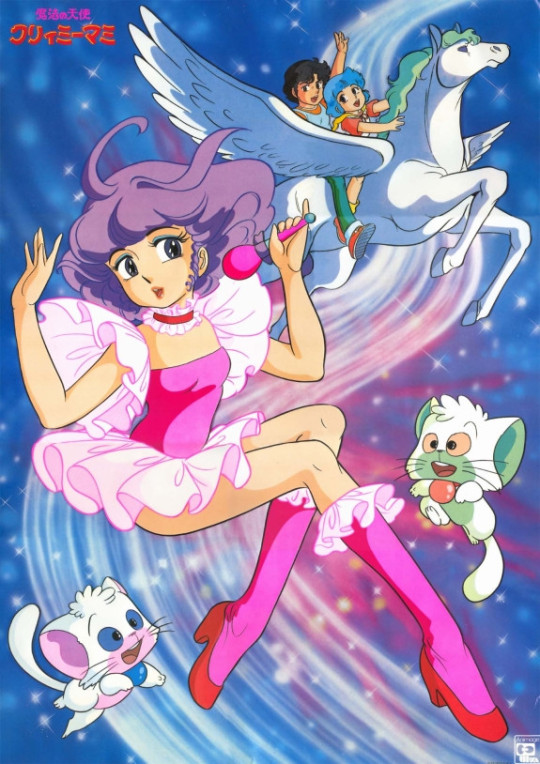
In Magical Angel Creamy Mami, Yu Morisawa is a normal 10-year-old girl, until the day she helps a small alien in his giant, invisible spaceship. For her help, she’s granted a magic wand with a variety of ill-defined powers and two helpers: talking cat-like creatures named Negi and Posi. Yu uses her powers to transform into a glamorous 16-year-old version of herself, who is quickly discovered by a record company and turned into a pop star by the name of Creamy Mami. She must navigate the demands of stardom while also occasionally solving strange magical problems and helping her friends.
I can’t claim to have any special insight into the minds of the show’s creators, but it seems pretty clear to me that Creamy Mami was tailored to fit the image of Takako Ota specifically, and the pop idol in general. The idol must be fresh and innocent even while being perfectly at ease with the demands of celebrity—both naive and media-savvy simultaneously—so our heroine is ten years old, but able to transform into an older, more mature form. She must be talented, but not seem ambitious—she must seem as though she has been plucked from her home without any preparation or training—so Yu is literally discovered by accident and pulled on-stage without even knowing she’s expected to sing, and uses magic in order to perform. The lengthy process of makeup and wardrobe is simplified into a glamorous transformation sequence: instant beauty, no hard work required! The idol is part of a massive pop-culture machine, but must seem like a completely ordinary girl who is never pressured by stardom, so the series has a hefty dose of comical magic antics and wacky side characters without any major consequences for our heroine. (The only recurring antagonists in Creamy Mami are a rival singer who resents the new, younger, cuter Mami, and an unscrupulous paparazzi named Snake Joe.) The overall premise of the series, with our main character being an idol herself, meant that Takako Ota’s musical talent was heavily featured, with one of her songs in the course of most episodes, in addition to both the opening and ending themes.
Many of the elements of the modern magical girl already existed prior to Creamy Mami—for example, transformation sequences were a part of series like Fushigi na Melmo and Himitsu no Akko-chan, as was the main character being a normal girl given magic powers rather than an inherently magical girl, and the cute funny sidekicks have been around since as early as Ribon no Kishi—but I would argue that they acquire a new importance and resonance when combined with the image of the idol. The glamor and pageantry of pop culture synthesizes nicely with the fantastic elements of the magical girl, while the dual nature of the celebrity—and in particular the idol, expected to be both untouched child and glamorous star—becomes something literally otherworldly, an amazing other self given by a being from the sky. By choosing a pop idol as both the main character and chief voice actress for Creamy Mami, Studio Pierrot had created a fusion of pop-culture archetypes that would become a huge success. The second generation of magical girls had begun.
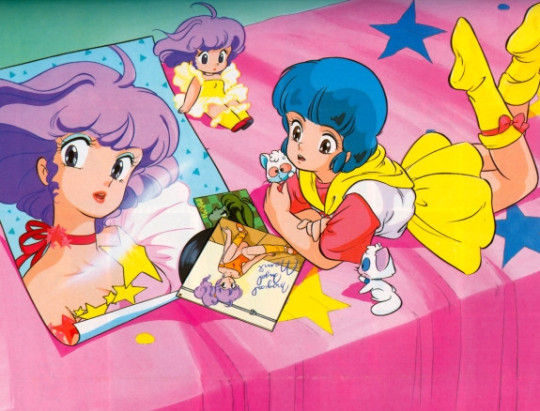
Creamy Mami ran for 52 episodes and several original video animations (OVA), proving quite popular for the new studio. It finished in June 1984, and Studio Pierrot immediately followed up with similar series, each lasting for about a year: Persia the Magic Fairy (Mahou no Yosei Persia), Magical Emi the Magic Star (Mahou no Suta Majikaru Emi), and Pastel Yumi the Magic Idol (Mahou no Aidoru Pasuteru Yumi). Each of these series had the same basic premise—young girl is given some kind of magic power by a magical being and uses it in her otherwise normal life—although surprisingly, despite the success of Mami (and the title of Yumi), none of these later series re-used the premise of the character being a pop idol.
(I hear some of you cry: “That’s it? Four series, each a year long, all from a single production company? That’s what you call a generation?” And it’s true! By the standards I lay out, the second generation of magical girls is extremely small. But I would say that these four series, Mami in particular, are crucial to the history of magical girls. Think of this as a vital transitional period for the subgenre, a relatively brief moment in pop culture that would soon be superseded by newer, more popular works—the equivalent of Archaeopteryx linking dinosaurs and birds, these series bridge the gap between Sally the witch girl and Sailor Moon. Additionally, I’m mostly talking about series and developments in chronological order; while this period in the mid-80s is the birth and peak of the second-generation magical girl, there have been later series that fit this category.)
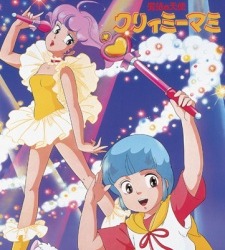
So what are the new elements added by the second-generation magical girl? As I see it, there are two: first, the ordinary girl and the magical girl are two distinct characters which require a visible transformation. As I said in the final paragraph of my first post, while the magical girl has always had to hide her abilities, only starting with this generation does she hide her identity behind another full-fledged persona. The opening credits of Mami show Yu and Mami’s faces spinning around like opposite sides of a coin. Creamy Mami is in fact even more separate than most other examples in the subgenre; not only does she look completely different from Yu, she is specifically described as six years older than her “normal” self. Again, this is the archetype of the pop idol given a fantastic spin; the “celebrity” is a different person from the “person.” (Think, for example, of Hannah Montana!) Connected to this first point, second, an emphasis on costume, pageantry, and physical transformation into a more glamorous self. This is also at least partly due to improvements in animation allowing for more impressive spectacle, but the creators certainly made good use of it. Mami is dynamic and colorful, obviously far more so than its black-and-white precursors. It is also more toyetic than previous magical girl shows, par for the course for a media mix show; Mami uses a magical compact and wand to transform, plastic replicas of which could be bought as accessories, and stuffed animal versions of her fairy companions were available as well. (To be fair, Mami was hardly the only series from this period to be merchandised so heavily.) To what degree the pageantry influenced the desire to make toys, or vice versa, I can’t say, but they certainly go hand in hand from this point on.
There are also elements of this generation that have become staples of magical girl series—the cute sidekicks, the magic trinkets—but I think those are not truly essential, or rather, that what is essential about them is included in my second point above. To put it simply, the second-generation magical girl is surrounded by more stuff—a wand, some talking cats, magical accessories—all of which add to the pageantry (not to mention the merchandise).
There’s another element which I don’t think is necessary for or specific to the second-generation magical girl, but which also deserves a mention: Mami and other shows are aimed at a slightly older audience than Akko-chan or Sally, and the characters are children who often have to navigate adult worlds. Mami is in the music business; the main character in Magical Emi is a young girl who participates in her family’s magic shows. Even in shows where the character is not specifically participating in an adult sphere, they still find themselves in the position of having to act like adults: in her very first episode, Persia tries out her new magic by transforming into a policewoman and tricking her friends. These characters have a child’s perspective on adult problems, and while they can sometimes help the adults in their lives, they are still often flummoxed by the mysteries of the grown-up world. I think this is largely a matter of changing pop-culture expectations, a recognition that older girls—relatively older, that is, pre-teens and teenagers—were watching these shows, and would want to see characters closer to their own age, or at least dealing with similar problems. Again, I don’t think this is a defining feature of this generation of magical girls, but it’s something that will come up in other series and which should be noted.
That covers the second generation of the magical girl subgenre! And boy, are my fingers tired. Join me for the third installment, in which we finally reach the series that would define “magical girl” in both Japan and the rest of the world, and which would leave an indelible stamp on the genre—and anime as a whole—that has lasted to today. You know the one I mean.
#magical girl#magical girl history#mahou shojo#creamy mami#studio pierrot#scsg!#persia the magic fairy#magical emi the magic star#pastel yumi the magic idol
121 notes
·
View notes
Text
LUCY’S REPLACEMENT
S4;E19 ~ January 17, 1972
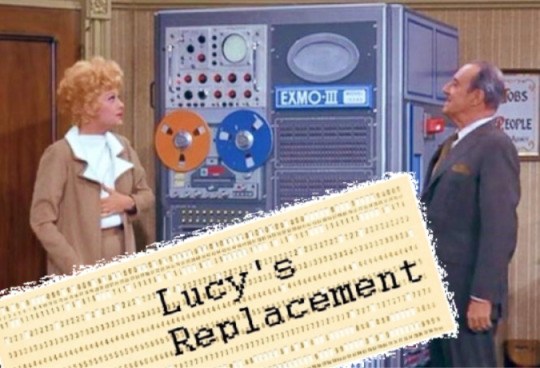

Directed by Coby Ruskin ~ Written by Fred S. Fox and Seaman Jacobs
Synopsis
Harry gets a computer and fires Lucy, who then gets a job in a typing pool at an insurance company. When she starts to miss Harry, Lucy and Kim sabotage the computer to get her old job back.
Regular Cast
Lucille Ball (Lucy Carter), Gale Gordon (Harrison Otis Carter), Lucie Arnaz (Kim Carter)
Guest Cast
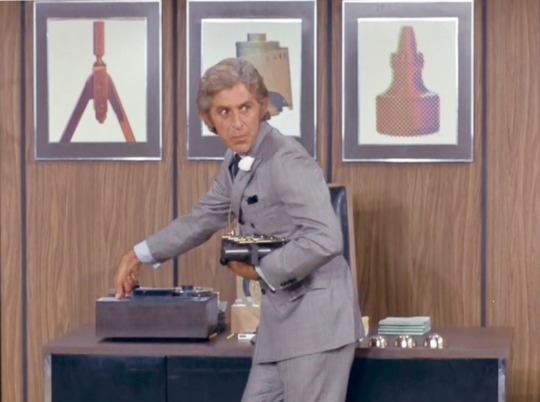
R.G. Brown (Mr. Conrad, Insurance Office Manager) appeared on “The Andy Williams Show” (1963) and “The Rich Little Show” (1976). He will do one more episode of “Here's Lucy.”
The character's name is only used in the final credits.
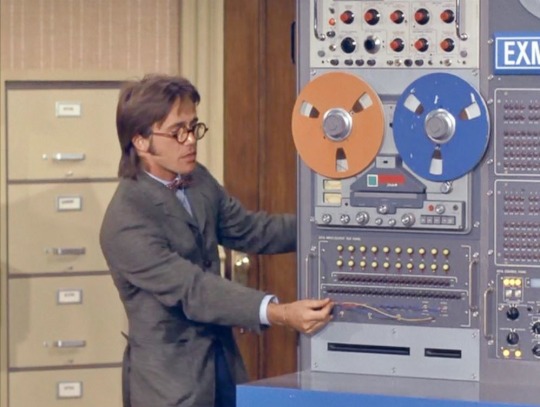
Phil Vandervort (Joe Hackley) appeared in two episodes of “The Lucy Show” where he met Lucie Arnaz. The two were married from 1971 to 1977. This is the second of his three episodes on the series.
Joe Hackley is an electronics major who Kim is dating (occasionally). Lucy calls him “that funny looking guy with the glasses.”
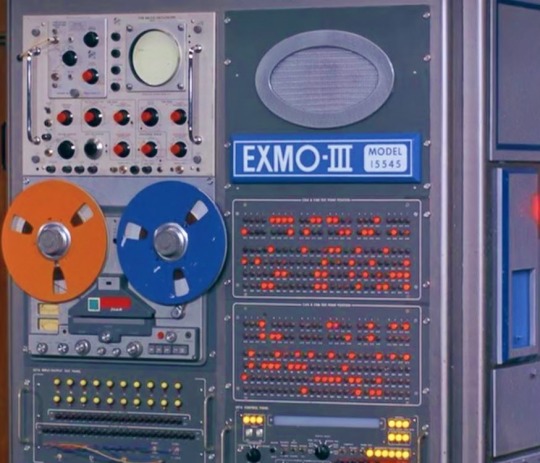
EXMO-III [Experimental Model #3] Model 15545 was designed by ‘Al Rylander.’
It is established that EXMO is a ‘he’. EXMO speaks, but his voice is uncredited.
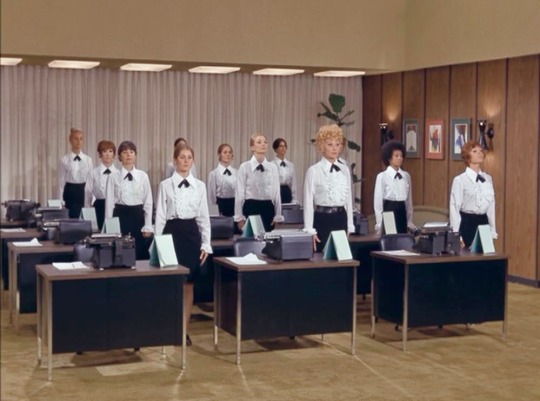
The 11 typists at the insurance company are played by uncredited background performers.
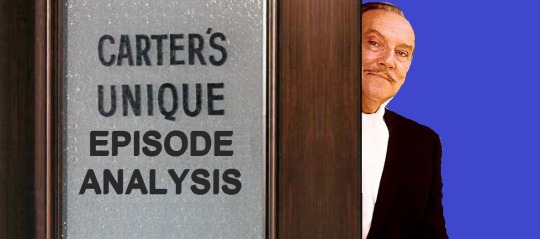
Coincidentally, two weeks before this episode aired (but well after its filming in late 1971), the first scientific electronic pocket calculator, the HP-35 was introduced by Hewlett-Packard and priced at $395 (equivalent to more than $2,400 today). Although hand-held electronic machines that could multiply and divide had been made since 1971, the HP-35 could handle higher functions including logarithms and trigonometry.

For this episode (only) Lucy Carter wears her hair in a bun similar to the way Lucy Ricardo did. Lucille Ball's hairstyles are credited to Irma Kusely.

Lucy calls the behemoth computer “a left-over from 'Star Trek'.” This is the first mention of the space series that was first produced by Lucille Ball at Desilu. Four days after this episode first aired, the very first convention of ‘Trekkies’ took place in New York City.
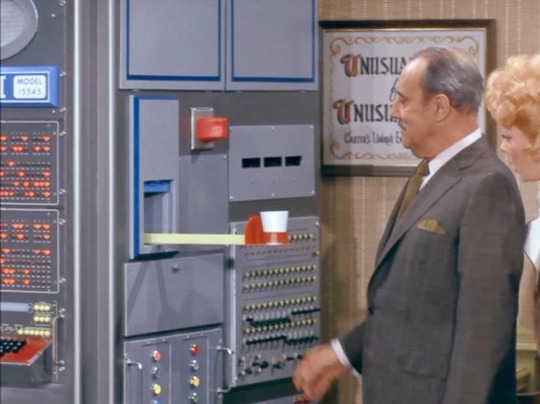
Harry credits the creation of the computer to his friend Al Rylander. Rylander was Gale Gordon's 'go-to' name during dictation to Lucille Ball on both “The Lucy Show” and “Here's Lucy.”
Harry mentions Lucy's son Craig, despite the character no longer being part of the series.
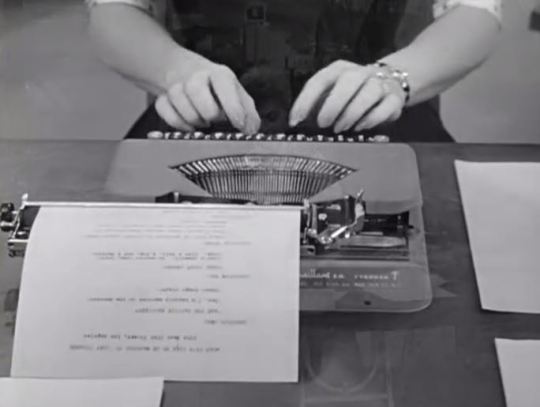
Regarding Lucy’s typing skills, Harry facetiously calls Lucy “the high priestess of hunt and peck.” Hunt-and-peck is a method of typing where one looks at the keyboard and only uses the index fingers to depress the keys. The traditional method of typing has the fingers gently resting on the ASDF JKL; keys with eyes on the material being transcribed or the typed paper, not the keys.
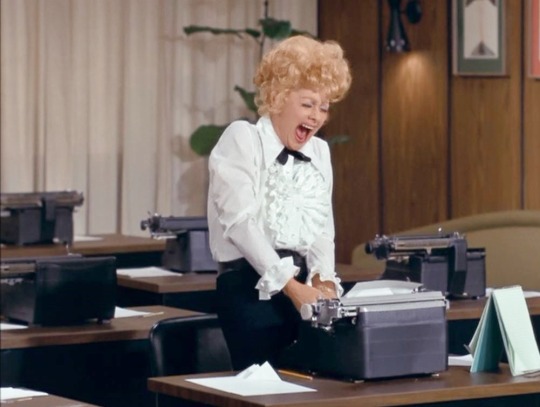
Lucy goes to work in the secretarial pool at The Great Pacific Insurance Company.
In “Lucy's Vacation” (S3;E17) Kim says that Harry has fired Lucy 14 times. This episode brings the total up to 17!
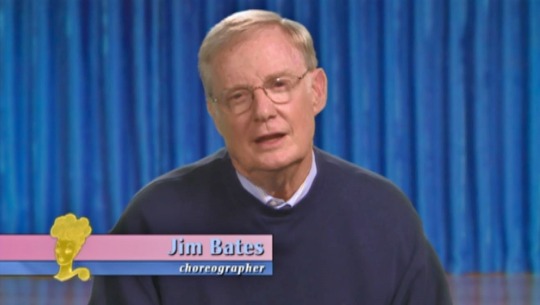
The coordinated typing sequence was ‘choreographed’ by Jim Bates, who introduces the episode on the series DVD. It is performed to "The Typewriter", a novelty instrumental piece written by Leroy Anderson in 1950, and first performed by the Boston Pops. The song was recently seen on Amazon TV's “The Marvelous Mrs. Maisel” using archival footage of a performance of it by Liberace in the late 1950s.
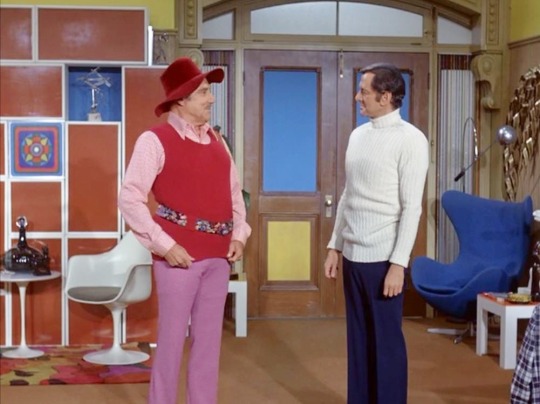
Kim calls Harry and EXMO the odd couple. “The Odd Couple” was a popular television series (based on a 1966 play of the same name by Neil Simon) that starred Tony Randall and Jack Klugman as mismatched roommates. It aired on ABC from 1970 to 1975. Tony Randall guest starred on “Here’s Lucy” (above) during “The Odd Couple’s” first season.

After being sabotaged by Joe Hackley, EXMO squirts coffee and cream in Harry's face, thereby fulfilling one of “Here's Lucy's” staple comedy bits: Getting Harry wet! Off screen, Lucy nicknamed Gale Gordon “Old Soggy Crotch”!
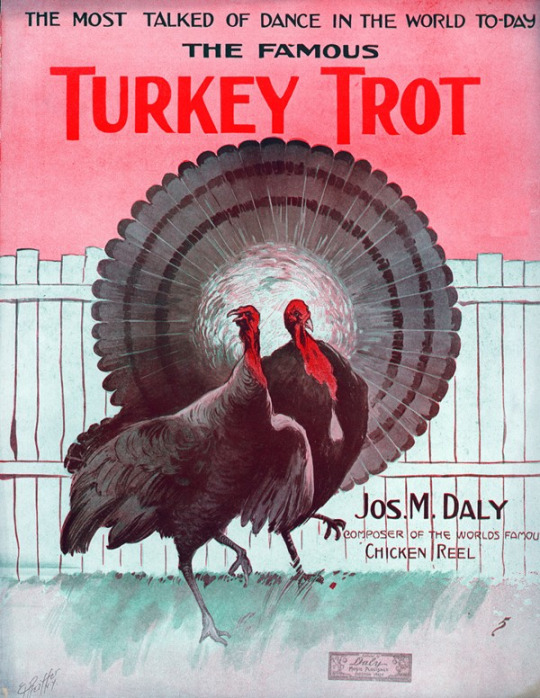
When Lucy walks in on a still-reeling Harry after EXMO has nearly electrocuted him, Lucy asks if he is “trying to bring back the Turkey Trot”. The Turkey Trot was a dance done to fast ragtime music popular from around 1900 to 1910. The basic step began with four hopping steps sideways with the feet apart. The dance fell out of favor by 1915.
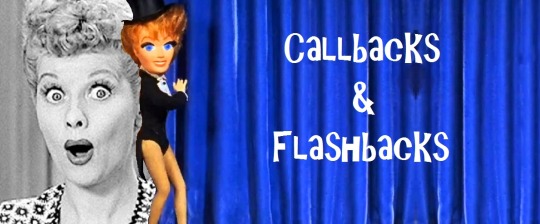
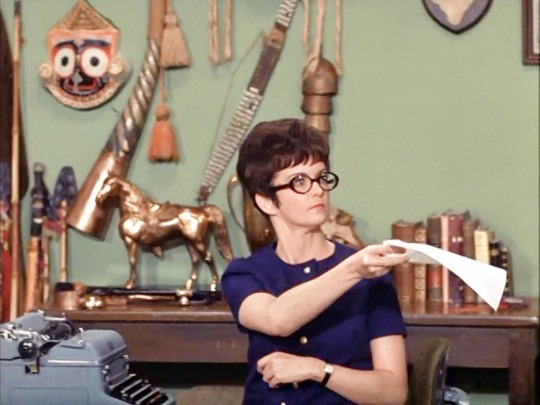
Fast and precise typing was demonstrated by Wanda Clark in “Lucy Protects Her Job” (S2;E14). Clark was also Lucille Ball's real-life secretary.
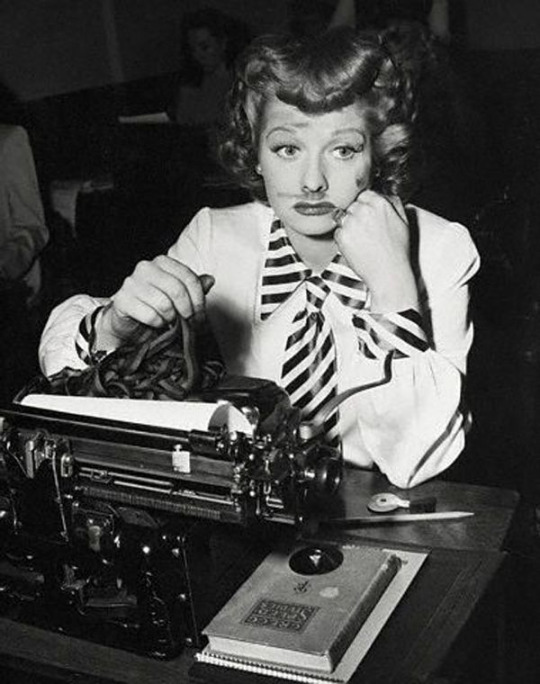
Lucy also had trouble with typewriters in the 1949 film Miss Grant Takes Richmond. In the film, Lucille Ball played Ellen Grant, the worst student at the Woodruff Secretarial School.
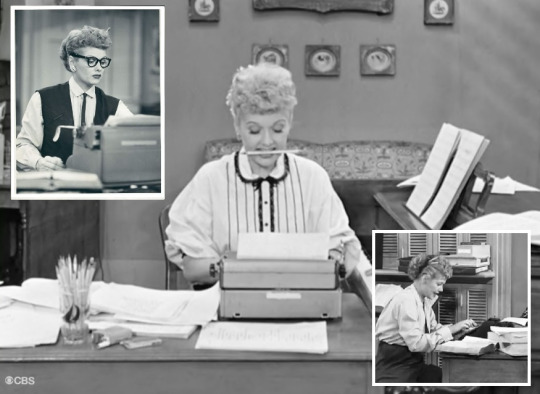
Although it wasn’t revealed until 1957′s “Lucy Takes A Cruise To Havana” (LDCH S1;E1), Lucy Ricardo also went to secretarial school (with Susie MacNamara) and wrote an operetta, novel and a play using a typewriter!

Lucy Carmichael was also a skilled typist and became secretary to Mr. Mooney at the bank, where typing was part of her job.

While working for Mr. Mooney, Lucy Carmichael had a human replacement played by Ruta Lee in “Lucy's Substitute Secretary” (TLS S5;E14).

One of the world’s first computers was mentioned on “I Love Lucy” in “Lucy and Bob Hope” (ILL S6;E1) in 1956! UNIVAC (UNIVersal Automatic Computer) was an early computer made by Remington Rand that at the time was used mainly for weather forecasting, but would also correctly predict that outcome of the 1956 Presidential election.

UNIVAC was mentioned again in 1964 in “Chris Goes Steady” (TLS S2;E16). Viv says that UNIVAC “couldn’t have come up with a better match” than Chris and her new boyfriend, Ted.
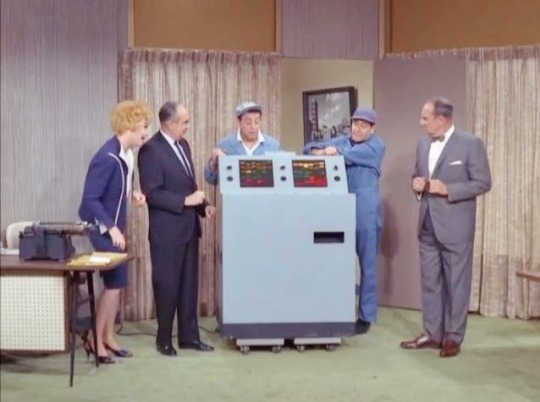
In 1966, ten years after Hope’s ad-lib mention of UNIVAC, Mr. Mooney (Gale Gordon) installed a computer at the Westland Bank in “Lucy, the Superwoman” (TLS S4;E26)...
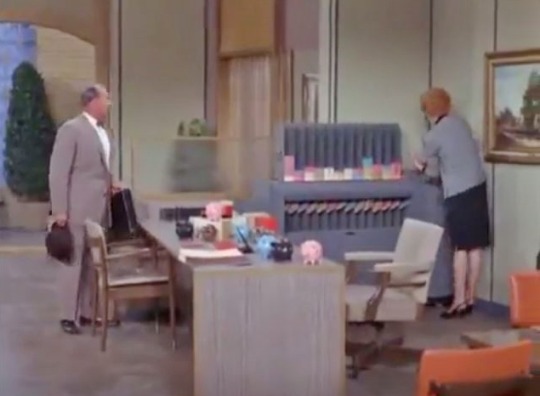
...as well as another one in “Lucy and Bob Crane” (TLS S4;E22).
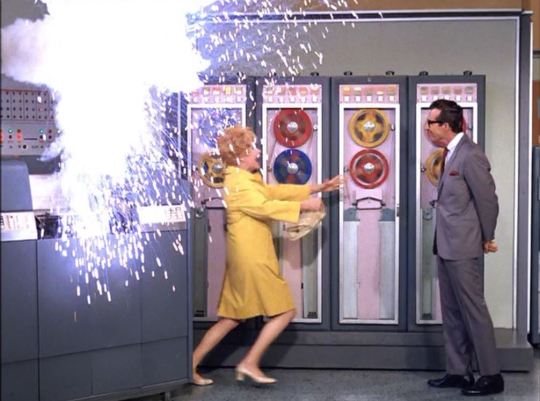
On “Here’s Lucy,” Computer Dating was the subject of “Lucy the Matchmaker” (S1;E12) in 1968. The comic payoff of most episodes featuring computers was having them short-circuit and run amok!
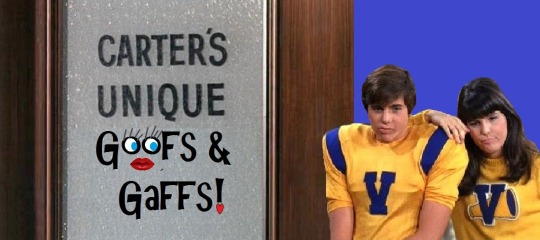
Logistics! In the office, the door at the left that is usually a closet, now allows Kim, Lucy and Joe to pass through to the outside hallway. Similarly, the door on the right, sometimes a bathroom, is here called the storage room. The exits are used as per the requirements of the plot without regard to prior episodes.
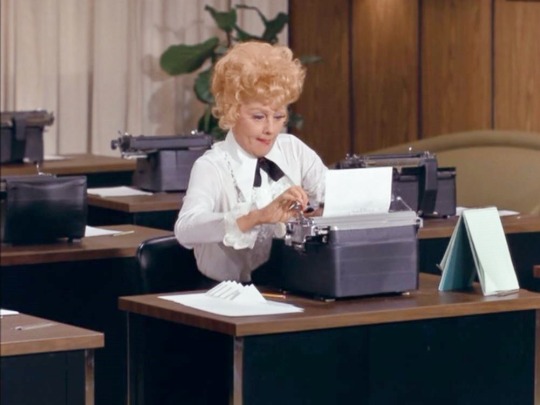
Props! For the high speed typing practice session, the spare paper is dog-eared to make it easier for Lucille Ball to pick up.
Sitcom Logic Alert! Time flies when EXMO announces it is 2:02pm. Less than 80 seconds of screen time later, EXMO announces it is 2:05pm! At the end of the scene, EXMO announces it is 2:09pm, yet less than 5 minutes have elapsed since he announced it was 2:02! Is is ironic, that on the table just behind EXMO is an hourglass, one of the oldest time-keeping devices known to man!
Knowing Your Place! In the first office scene, EXMO is positioned against the wall behind Lucy’s desk and the shallow table normally there has been removed. In the second office scene, Lucy’s desk has been moved to the side, EXMO has been moved forward and the shallow table has returned! That’s a lot of moving of some very heavy furniture!
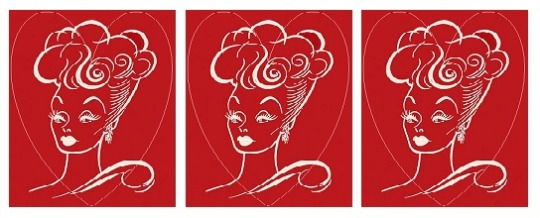
“Lucy’s Replacement” rates 3 Paper Hearts out of 5
The worry that computers would replace people was a common TV trope of the ‘60s and ‘70s. The episode contains a short but wonderful scene between Lucy and Kim that feels especially real. Lucille Ball shows her joy of working with her real daughter as Lucie exits. There are also genuine displays of emotion between Lucy and Harry. Maybe it is her Lucy Ricardo-like hairstyle, but the comedy here is very reminiscent of “I Love Lucy.”

#Here's Lucy#Lucille Ball#Gale Gordon#Lucie Arnaz#computer#Coby Ruskin#Fred S. Fox#Seaman Jacobs#R.G. Brown#Phil Vandervort#EXMO III#Rylander#The Typewriter#The Odd Couple#Star Trek#typists#secretaries#1972#CBS#TV#Desilu#The Lucy Show#I Love Lucy#UNIVAC#Computer Dating#typing pool#hunt and peck#turkey trot#Miss Grant Takes Richmond#Wanda Clark
2 notes
·
View notes
Text
Video Killed The Radio Star
“We hear the playback
and it seems so long ago
And you remember
the jingles used to go”
- The Buggles
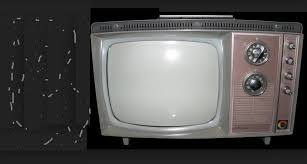
My mom asked me to help her set up an Apple TV a while back, and it made me realize how far we have come as far as entertainment options go. I remember the day my dad came home and announced he saw that they were installing cable TV lines in the neighborhood. He was about as excited as I have ever seen him. It meant we increased our channel roster from about five to over thirty! There was a network that played sports 24 hours a day! We could watch movies at home uncut and uninterrupted. I wanted my MTV and now I got it! It may seem quaint to someone who wasn’t there at the time, but it was an incredibly cool and mind-blowing experience when you consider how our viewing experience exponentially changed with the installation of that little black cable.
As I was setting up the Apple TV, and all of the incredible options that come with it, I did not feel the same as that day in 1983 when I could now watch Nickelodeon and Australian rules football to my heart’s content. Sure, the explosion of viewing options within cable and streaming services are just awesome, but sometimes it seems too much. The immediate gratification of it all is disappointing as well. The concept of binge watching seems to take away from the anticipation we used to have from the episode we waited all week for (or all summer for a cliffhanger). That anticipation would start with the show’s theme song, which I feel is a real lost art. Just the act of hearing that familiar tune along with credits and scenes of the stars of the show was almost as exciting as the show itself. It may make me seem old and out-of-touch, but I really miss those days when we lived without DVRs and on demand viewing and got real theme songs to kick off your entertainment viewing experience.
But instead of rueing over days long lost, let’s celebrate some of those old shows (that ironically are all over Hulu and Netflix) that were not only great programs, but had the type of theme songs that really made you feel good when they came on. It meant something that you waited for all week was about to arrive, and for an hour or two you could lose yourself in a world away from your own. I now present to you my ten favorite tv theme songs and their shows, in no particular order:
1) All in the Family - In fall of 1973, CBS put forth what is considered the finest lineup on one night in television history. On Saturday nights, people stayed home for three straight hours of unparalleled entertainment. This was the start of it all at 7:00 (all times I give you are Central). There was no better lead off than Edith and Archie sitting at the piano singing “Those Were the Days”. How cool is it to have your lead actors sing the theme song live. All In the Family was so great it had a separate ending theme. You can read plenty elsewhere about the groundbreaking episodes that went on in between, but the theme music from this series gets us off and running.
2) Rockford Files - This show always opened with a unique montage of a client of Jim’s leaving a message on his answering machine. What followed was what I consider the best music composition on the list. Written by Mike Post, it is a funky, hard driving and timeless theme just like the Pontiac Firebird he drove. I like this song so much it is often in my normal rotation on many of my daily playlists. The program was great, for sure my favorite detective show of all time, but I would tune in just for this song.
3) Hill Street Blues - This is another Mike Poat theme, but couldn’t be more different than Rockford’s theme. Jazzy rather than funky and smooth versus hard driving, the piano of the song seemed to sum up everything this show was about. I recently caught up with some episodes on Hulu recently and forgot how ahead of its time this show was. Before Hill Street Blues, police dramas tended to tie things up neatly before the hour ended. This show, like life, didn’t always work out so well. The sadness of the lives in the people in the show is tinged throughout the theme. But, you also hear some hope in the final chords, and I think that what the show was all about. It told us that life could be a grind and full of despair, but there are also a lot of good people trying their best to ease suffering and make this world a better place. That’s a lot to pack into one theme song, but this one hits all the right notes.
4) M*A*S*H - This was in the 7:30 slot on the CBS Saturday lineup and was put there to boost its ratings in its second season. As hard as it is to believe in hindsight, the show struggled to find its audience in its first year. For many folks, the opening theme was their first introduction to this unique medical/war comedy/drama. Like the show, the theme (titled “Suicide is Painless”) was taken from the 1970 movie of the same name. The TV version dropped the lyrics and became one of the most instantly recognizable themes ever. The show that followed is very good too. I must confess that I am a bit of a M*A*S*H aficionado and the second season was one of their best (I’m partial to the McLean Stevenson/Wayne Rogers episodes). If you haven’t watched the show in a while, give a couple of episodes a spin (now on Hulu). I’ll bet dollars to donuts you are whistling the theme the rest of the day.
5) WKRP In Cincinnati - A terribly underrated show with an equally underrated theme, the quirky gang at WKRP were always good for some laughs and DJs spinning great records. While the theme song is fantastic (“...baby just think of me once in a while” is such a great line), the real soundtrack of the show was the late 70s/early 80s rock and roll in the background of each episode. Unfortunately, due to licensing issues, you don’t get those songs in the reruns, but the crazy storylines and big laughs that come with them still make this series worth your time. As a side note, the lyrics in the theme at the end are pure jibberish. The writer of the song used nonsense words as placeholders but the producers kept them in as a bit of an inside joke about how hard rock lyrics are to understand. I think that perfectly sums up what WKRP is all about.
6) Mary Tyler Moore Show - Who can turn the world on with a smile? Mary no doubt did it every Saturday night at 8:00. I have vague memories of this show the first time it came around as first run episodes, but found it later in reruns and discovered what a true gem it is. The characters were quirky and unique without being oversimplified and the acting of the supporting cast was brilliant. Any show with Ed Asner, Ted Knight and Betty White is going to end up being our gold. As for the theme song, I think it is the most hopeful and happy on the surface, but it always struck a sad note with me. There always seemed to be a back story with Mary in the show that we weren’t always getting that hinted of difficult times before she got to Minneapolis. The song echos that and her throwing the hat up at the end seems to tell us that no matter how rough things were, or might end up, she’ll keep that smile on her face. Not a bad lesson for all of us to follow.
7) Three’s Company - In the interest of full disclosure, I did not watch this show when it first aired. It was banned from my house by my mother because it was “stupid”. Once I left the house for college, I wanted to start trying new things and testing my independence in this world, so the first thing I did was devote every weeknight from 10:00 to 11:00 to the Three’s Company reruns on Channel 32. What I saw was certainly a bit stupid but far from a waste of time. Arguably, the show included some of the finest physical comedy of it’s day and was a great showcase for actors like John Ritter, Norman Fell (Mr. Roper) and Don Knotts. Admittedly, the premise and some of the themes of the show have not aged well, but I never saw anything but an intent to have fun and provide a few laughs. That was conveyed in the theme song which was as light and airy as the breeze coming off the Pacific while standing on the pier in Santa Monica. For me, just the sound of that song brings back a memory of living in the college dorms and starting off an independent life full of promise and possibilities. Each episode of this show felt the same even if each could have been solved in the first two minutes with a simple question or statement like “No, Mr. Furley, Jack is getting a Mexican pot to cook in, not the kind you smoke”. I guess though, that wouldn’t have been all that funny.
8) Barney Miller - This one is on here purely for the bass line. The notes are unmistakeable and leads into a full jazz combo with killer lead guitar. The funk you hear in the theme follows along with the show. The detectives at the precinct seemed to take what initially seemed to be mundane aspects of police work and turn every epsiode into a funky life lesson. I read somewhere that real cops think this is the police show more true to life than any other they have seen. I’m guessing it was because they drew up characters so real to the point where you would think of them as people first and not some exaggerated character as most police are drawn up on TV. The whole thing just worked and really was quite funny. The episodes hold up very well in reruns as well, so if you have never given it a try, I think you’ll find that it is as good as any other cop show you have seen recently.
9) Bob Newhart Show - Anchoring the CBS Saturday night 8:30 slot is another jazzy instrumental that is a great theme, but in this case the show behind it was the real gem. Just like Barney Miller, The Bob Newhart Show took the fairly mundane aspects of life - whether it be at the office or at home - and mined them for laugh after laugh. For those who are finds of Mr. Newhart (Loyola, Class of ‘52), this is no surprise. Bob could literally turn a phone call into absolute hilarity. His choice of profession on the show was perfect as well - for those who don’t know he played a psychologist. As someone who has spent a lot of time in the offices of mental health professionals, I can tell you first hand that the only portrayal that I have seen that is true-to-life is the one on this show. The group therapy sessions are always the real gems and this show nails exactly what they are like. I can’t it explain it much further, just go get a copy of the first season of this and watch it and you’ll know what I’m talking about. Also, this show gets credit for one of the best wacky neighbors - Howard the pilot played by the incomparable Bill Daley. Of all of the shows on this list, this is the one that I would recommend you check out before all others.
10) The Love Boat - The show was pretty lame though I can be talked into watching anything that could have Sonny Bono, Vincent Price, and Chart as guest stars on the same night. The theme, however, was a winner. Sure it was cheesy, but it fit the series perfectly and always gave me the impression that I would know I made it in life if I could take a cruise on a boat like the Pacific Princess (I haven’t so I guess that I’m still waiting to make it). Another reason that I love this show is that I have fond memories watching it with my Grandma when we would occasionally stay over at her house on Saturday nights. Her smart comments about all of the washed up actors and how bad they looked or untalented they were was the real entertainment of the evening. Plus, just the fact that she let us stay up late to watch it was a real treat in it of itself. She would make us popcorn and let us have a soda and we could just live it up. It’s funny how the most simple things in life end up being the most memorable. I’d give anything right now for an hour again with her and that show. Gosh, what fun.
Honorable mentions include the themes from Hawaii 5-0, The Golden Girls, Cheers, Sanford & Son, The Greatest America Hero, Good Times, The Odd Couple, Welcome Back Kotter, and Miami Vice
Now, I know that I’m being a real old-timer here by bringing out these ancient shows, but I will challenge you to a different binge-watching experience before passing judgment on my list. Just You Tube the ten opening theme songs/credits that I list here and watch them in order. You don’t even have to watch whole episodes of these shows (though if you the time you should). I guarantee that you will get a feel for what it was like when these shows were first on the tube. Or, if that’s too much work, I made you a playlist with a few other favorites:
https://open.spotify.com/playlist/2J8rLlC3FIAvaCLmQg95vT?si=fpgJ8wYaSH-V0M0gP12rvA
I am now at the ending point of this post. It’s always hard for me to come up with a good finish to one of these. I now realize that I need a good theme song. I guess that is going to be hard to convey in written form and also because I don’t have one, but hum something catchy in your head and play it across images of the great times you just had reading this blog.
Until next time....
Jim
P.S. - The last hour of “The Greatest Night in Television” on CBS was occupied by the Carol Burnett Show. A fantastic program, but not my favorite theme, so it did not make the list. Still worth checking out if you find it on somewhere if only to watch the cast crack up at Tim Conway’s antics.
0 notes
Text
‘Fargo’ Uses Pop Songs Better Than Any Show On Video
FX / Warner Bros..
As prestige TV proceeds to ape the conventions of theatre, a growing number of TV shows have stepped up their match once it comes to a device near and dear to my own heart — with pop music. Many of the Very Best and most talked-about displays on television do this very well: The Americans, Big Little Lies, Better Call Saul, Mr. Robot, Legion,Halt & Catch Fire. But there is one series that really does it a bit better than the rest, FX’s Fargo.
Filmmakers and showrunners utilize pop songs. The most basic objective is to immediately set a time interval — Duran Duran for its ’80s, CCR for those ’60s, Donna Summer for the ’70s, Nirvana for its ’90s, and so forth. Considerate artistswill really incorporate the audio as either a Greek chorus signaling themes that are significant or simply as a window to the lives of the characters. Or they’ll revel in the possibilities which arise when you choose a part of activity and mix it with a tune, which can elevate an otherwise flat sequence to the dizzying heights of a dance number.
Fargo, notably in its second season, has escalated in using tunes as storytelling devices, in addition to finding ways to create musical sequences that looked and sounded unbelievable on-screen. Throughout the show’ forthcoming season, I’ll be writing weekly columns dedicated to the way Fargo employs music in each episode, exploring the ways that tunes deepen (or perhaps detract from) the storyline. (I’ll also inquire into the obscure tracks which will inevitably pop up on the soundtrack, for people without ready access to Shazam.) Before that, here are five good moments from the first two seasons.
Season 1, Episode 2: Eden Ahbez, “Full Moon” Scene: Mr. Numbers and Mr. Wrench get rid of a body in an ice-covered lake.
Fargo did not really hit its stride for a series that cinematic scenes to pop music in distinctive ways until its next season. However, this incident from early in season one shows Fargo‘s flair for digging up obscure tunes and doing something subversive together. Ahbez is a cult figure who achieved his greatest triumph in 1948 when his song “Nature Boy” has been conducted by Nat King Cole, who flipped it into a No. 1 hit. “Nature Boy” was reflective of Ahbez’s proto-hippie life — he wore his hair long and grew up a Jesus beard to choose his normal garb of sandals and white robes. (Ahbez was also living beneath the “L” at the Hollywood sign all over the time which “Nature Boy” became a hit.) On his own, Ahbez recorded profoundly strange, ethereal music including his starry-eyed, spoken-word vocals, as typified by the strangely hypnotic “Full Moon.”
On paper, “Paper Moon” shouldn’t go with a spectacle where a guy his killed by two hit men. But much like the Billy Batts sequence in Goodfellas, which uses Donovan’s similarly hippie-dippy “Atlantis” while Robert De Niro and Joe Pesci celebration Frank Marino’s head in, the mix of violence and serene audio functions in a yin-yang sort of manner, conveying the pathology of people that commit horrible acts with cool efficiency.
Season 1, Episode 9: “Green Tambourine” by the Lemon Pipers
Scene: Super-criminal Lorne Malvo, posing as a dentist at Kansas City, hosts a party at his home.
“Green Tambourine,” a likably trashy bubblegum oldie which went to No. 1 in 1967 and has been the only real hit by ersatz-psych group the Lemon Pipers, could typically be an unusual choice to score a celebration scene that happens in 2007. But it’s perfectly suited for Fargo, that informs stories which take space during hyper-specific periods of time which also somehow appear to exist slightly out of time.
Lorne Malvo, particularly, seems like he could be a commodity of every year between 1989 and 1961. It is a part of the character’s life, “there really are no rules” influence on the entire world around him, represented in a small way by reviving the outdated “Green Tambourine” at a scene which takes place 40 years following the song’s original cultural instant. For Malvo, “Green Tambourine” represents normalcy and mediocrity — it’s his way of appearing like a regular individual while slyly commenting on how boring he thinks ordinary folks are.
Season 2, Episode 1: “Children Of The Sun” with Billy Thorpe
Scene: Rye Gerhardt pushes to face a quote in a diner.
In an interview with The A.V. Club, Fargo music supervisor Marguerite Phillips explained that the series’s creator Noah Hawley “wanted me to research prog rock and Krautrock” as a musical motif for the next season. Though I prefer to believe that it’s also regarding the pervasiveness of AOR this could be related to the year’s sci-fi overtones. (As a native midwesterner born in 1977, a number of my earliest memories have been scored by pomp-rock riffs and ridiculously wiggy keyboard solos.)
Apparently, Billy Thorpe’s anthemic “Children Of The Sun” was among those very few songs ever written to the script of the second-season premiere. While mostly forgotten now, Thorpe did exist around the periphery of FM radio from the late night ’70s, that gave him sufficient exposure for the Australian rocker’s 1979 concept listing Kids Of The Sun to hit the top 40 in the album chart. In addition to subtly foreshadowing the preponderance of UFOs at Fargo‘s sophomore year, “Children Of The Sun” seems like the sort of song you’d hear in the radio late at night whilst riding shotgun on a lonely street road near the edge of Minnesota and North Dakota in 1979.
Season 2, Episode 7: Lisa Hannigan, “Danny Boy”
Scene: Bear Gerhardt implements his niece, Simone
The biggest hurdle for Fargo the TV series has been overcoming comparisons to Fargo the film. A show that was confident would have worked to play down the Coens’ influence. However, Fargo has rather embraced not only its cinematic supply material but the entire Coen brothers oeuvre, though in a manner that’s more reminiscent of an inventive remix than a slavish cover. In the next season, this interpreted musically by having modern artists perform versions of classic tunes related to Coen brothers movies, such as Blitzen Trapper’s shoot the normal “I’m A Man Of Constant Sorrow” (out of O Brother Where Art Thou) and White Denim’s redux of Kenny Rogers and The First Edition’s “Just Dropped In (To See What Condition My Condition Is In)” (in The Big Lebowski).
In the case of “Danny Boy,” which initially uttered the remarkable shoot-out series from Miller’s Crossing, the Irish singer-songwriter Lisa Hannigan was called on to execute a distinctively lovely rendition for arguably the most funniest scene at either season of Fargo. For a callback to the Coens, “Danny Boy” stands alone as a memorable audio queue on Fargo. It might, in fact, even top Miller’s Crossing, where the use of “Danny Boy” enrolls as marginally jokey. But on Fargo, the song’s sentimental depiction of familial love and the death of generations gets the death of Simone doubly awful.
Season 2, Episode 10: Black Sabbath, “War Pigs”
Scene: Everything goes to hell in Sioux Falls.
Here we’ve got a tune that strikes on every one of the bases for tune usage that is good. It’s a strong personality option for Hanzee — that I could easily imagine him listening to Paranoid non-stop whilst serving several tours in Vietnam. It comments on the activity. It will help to set the time and place — nothing epitomized evil in communities at the ’70s and ’80s including Black Sabbath, whose music and iconography served as shorthand for the mania from Satan worshippers that are mostly non-existentent.
But place of the and re-watch the sequence another 37 times. There’s something to be said for having a song because it seems incredible when juxtaposed against terrifying action that’s unfolding on a split screen. Much like the Scorsese-esque “Locomotive Breath” chain in the next season’s seventh episode, “War Pigs” gets over on sheer cinematic audacity. It looks cool since it looks freaking cool.
from reviverradio http://www.reviverradio.net/fargo-uses-pop-songs-better-than-any-show-on-video/
5 notes
·
View notes